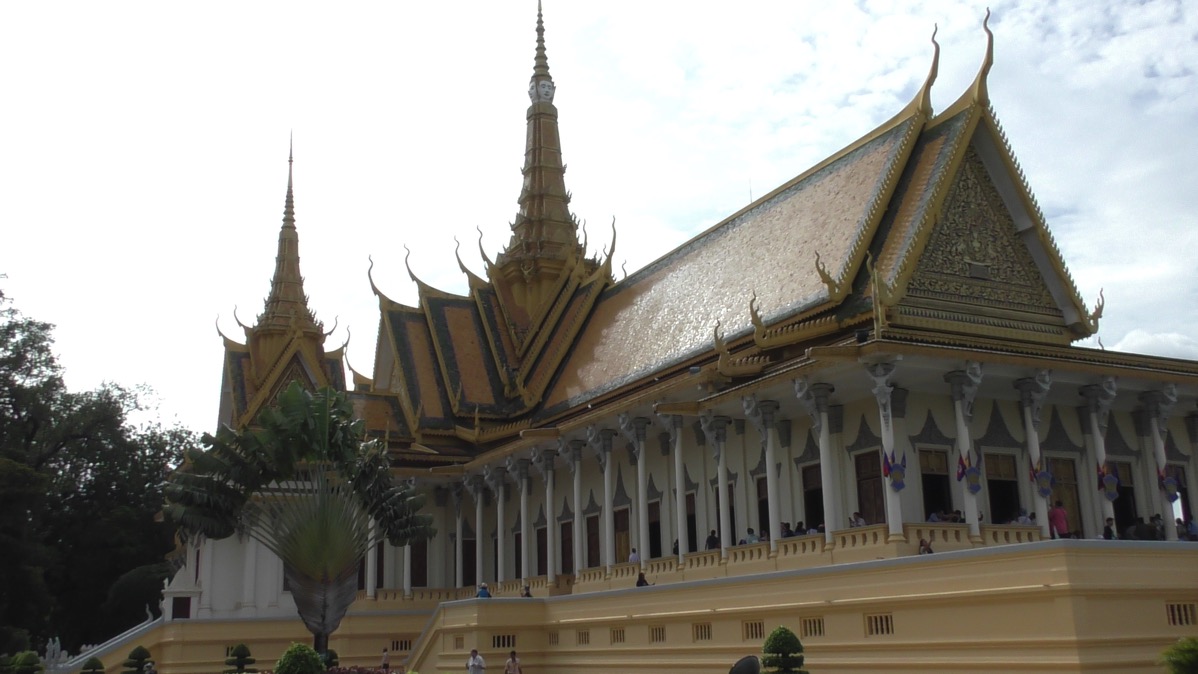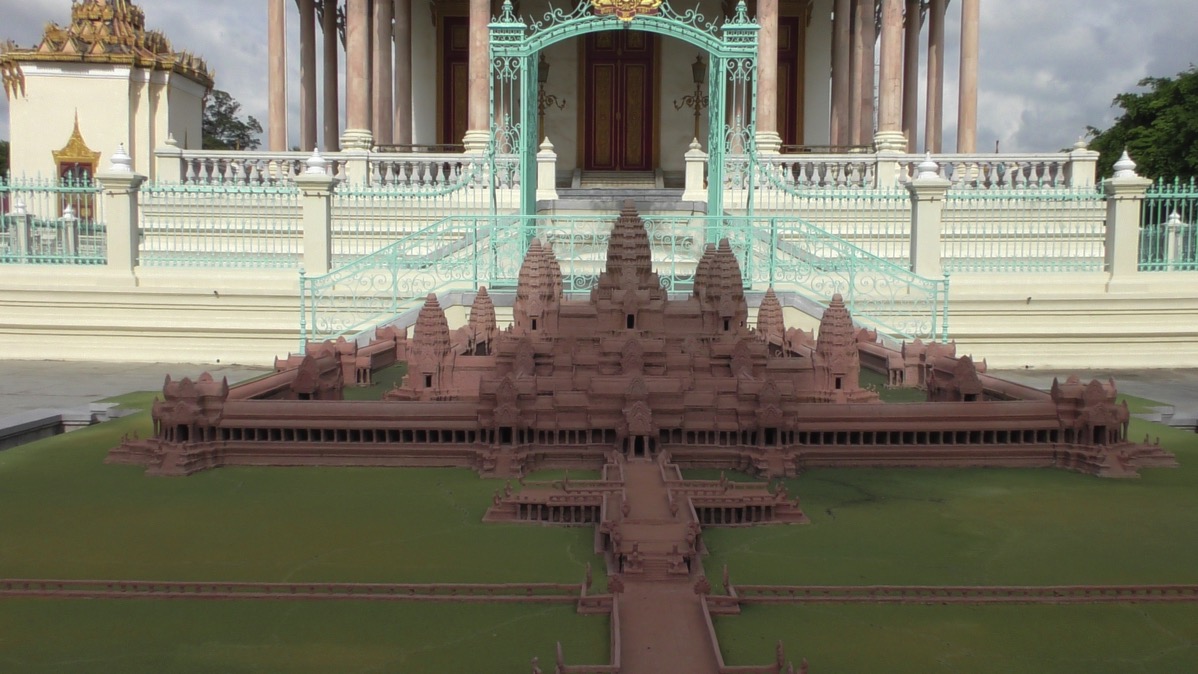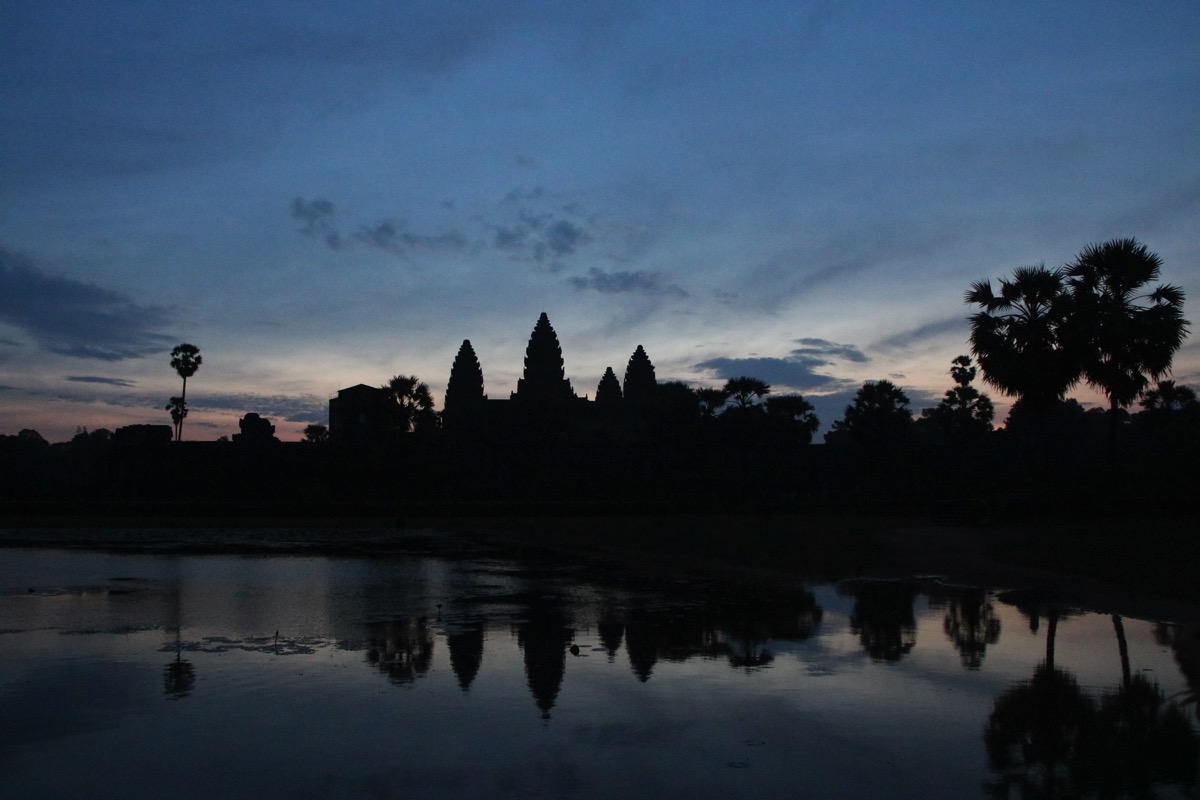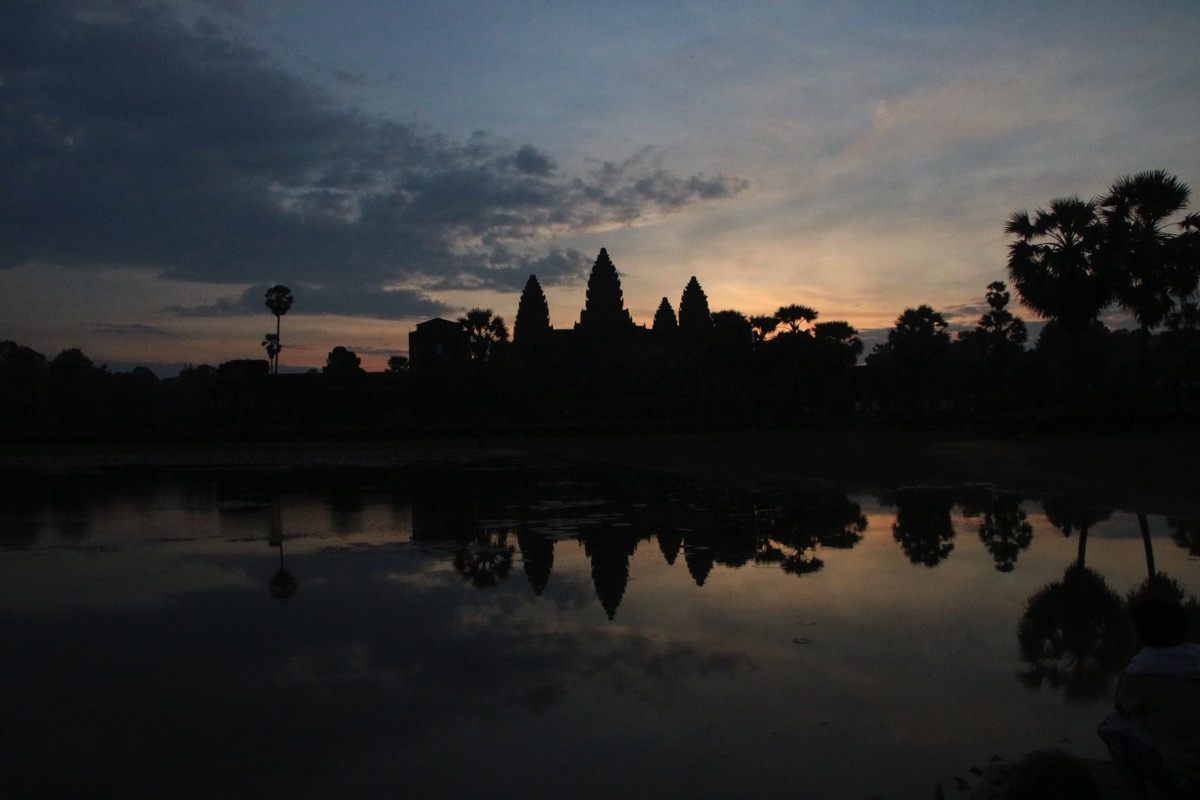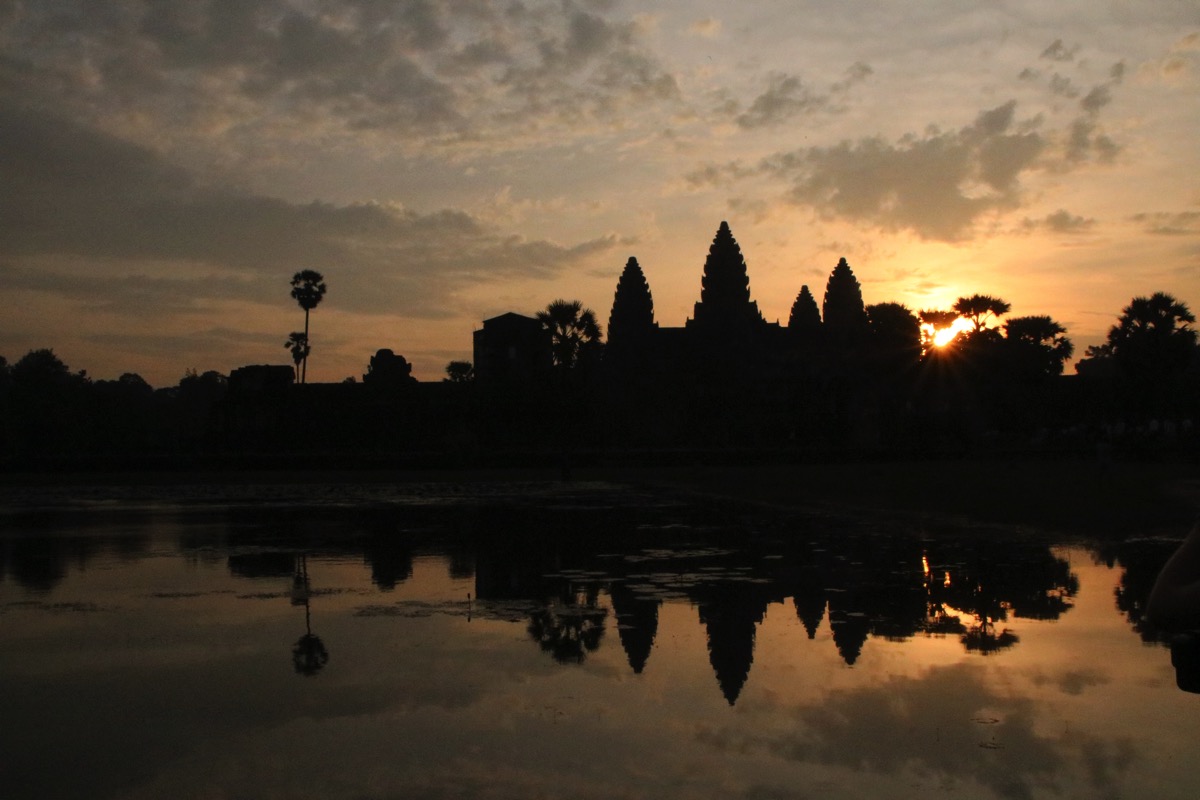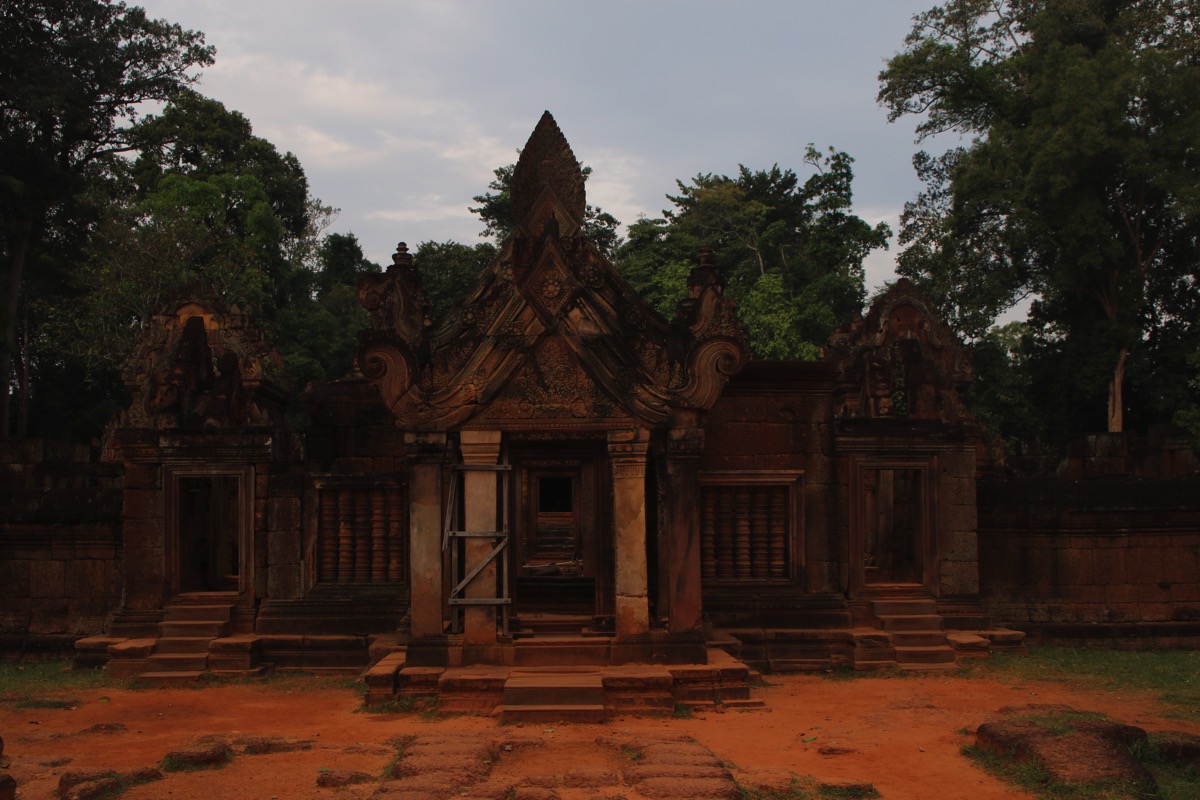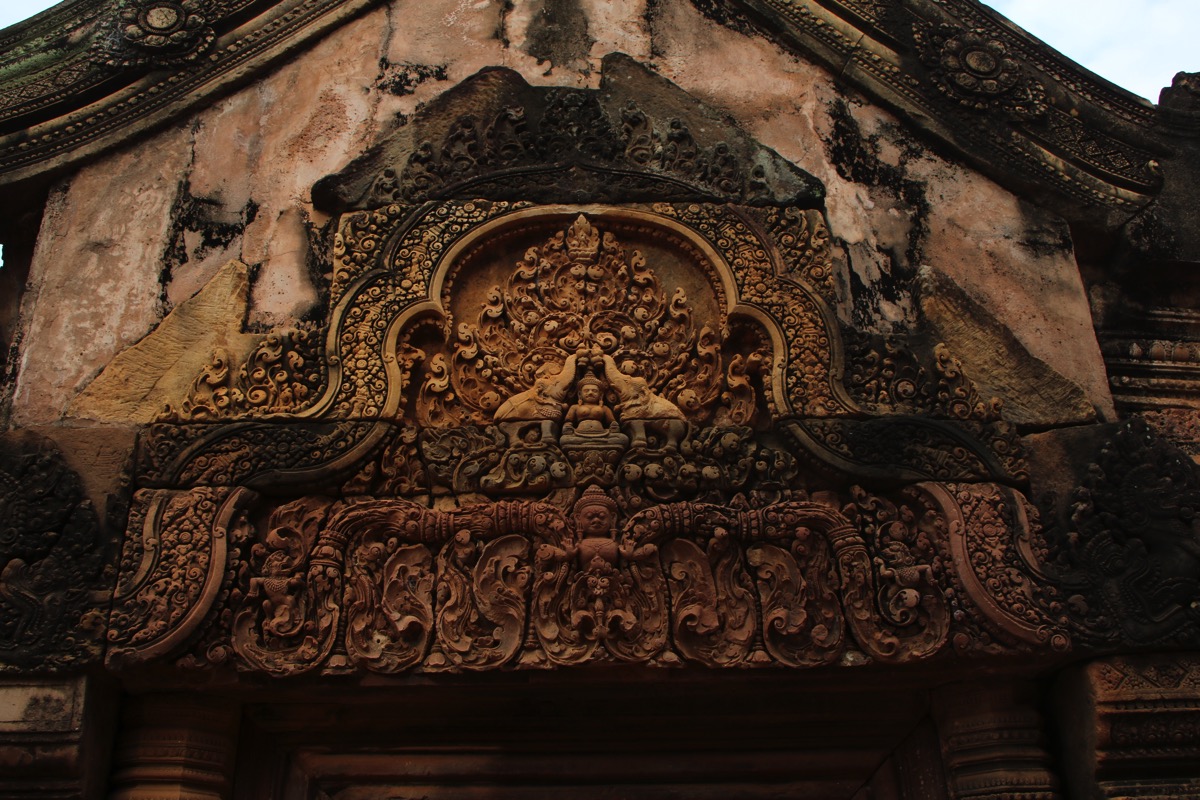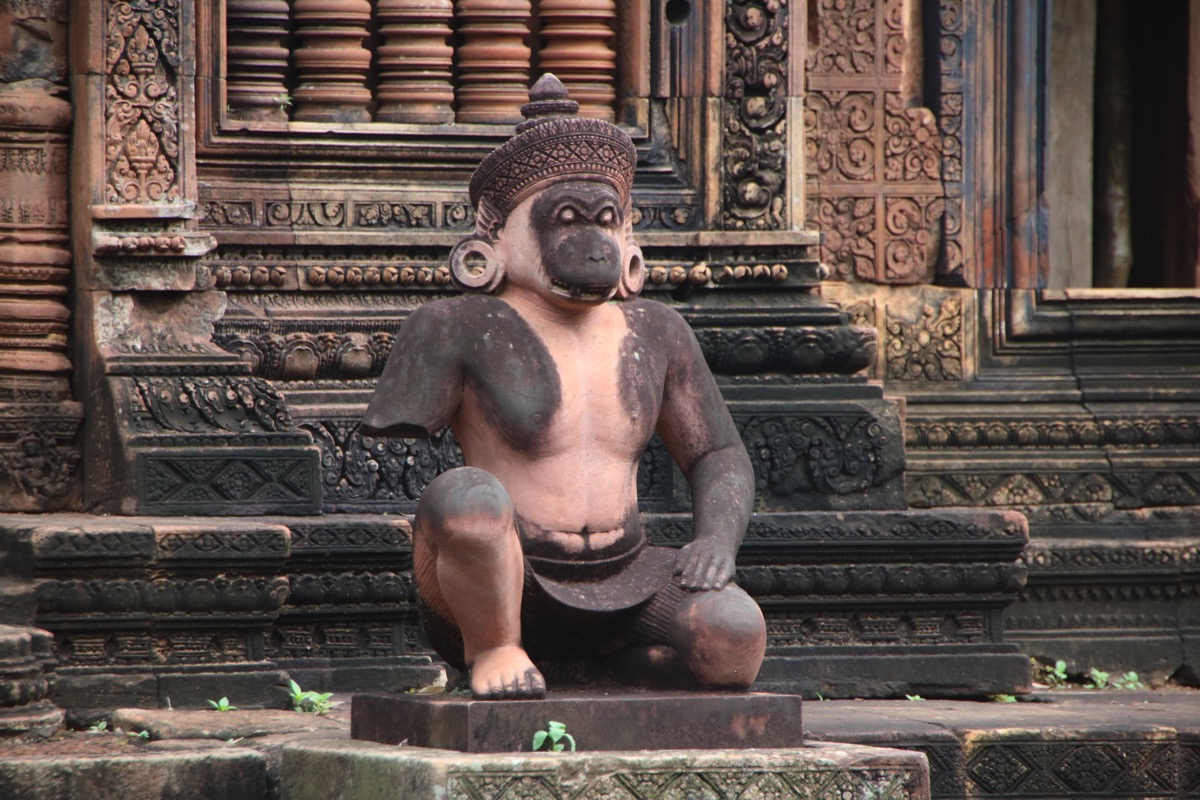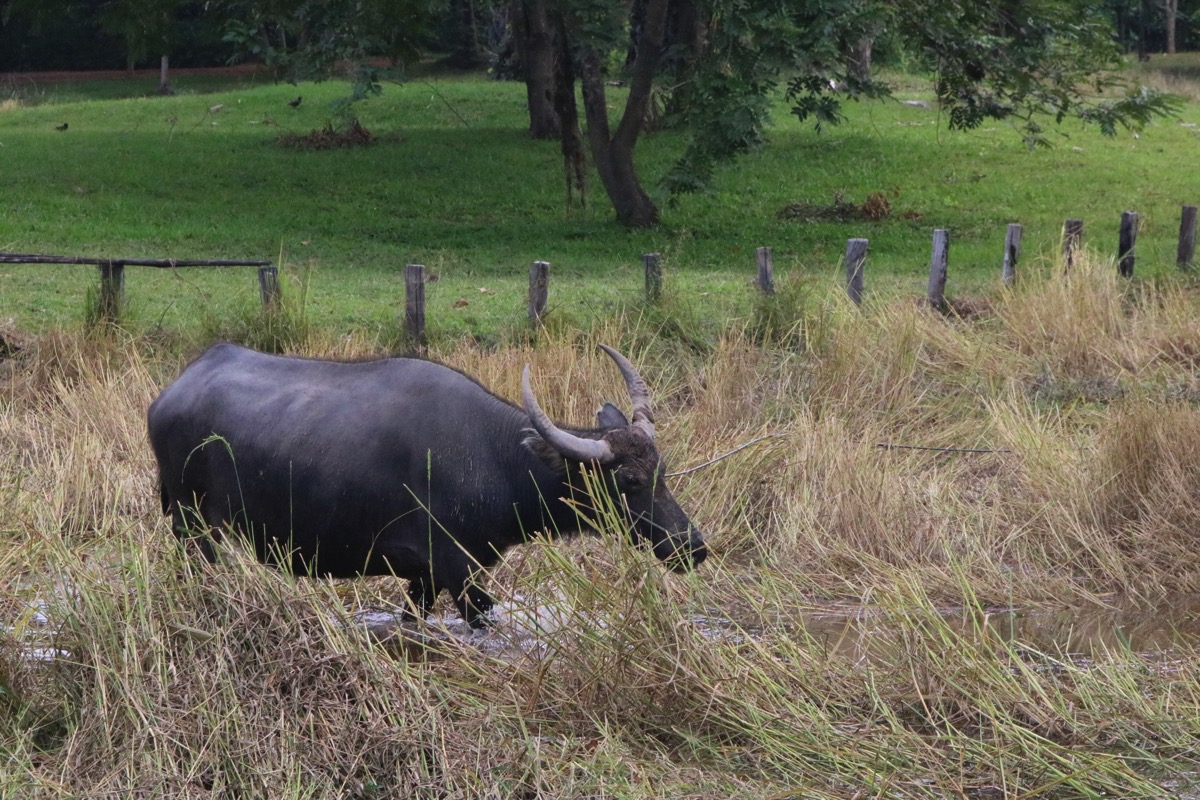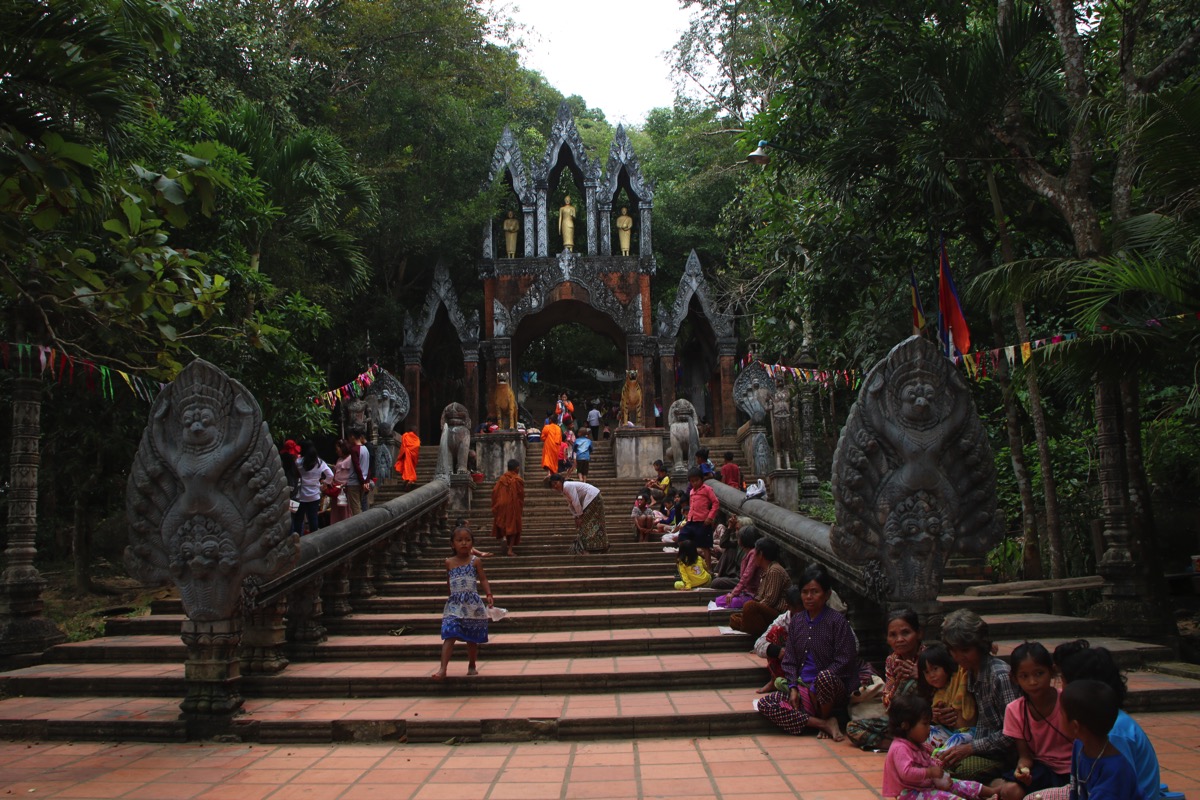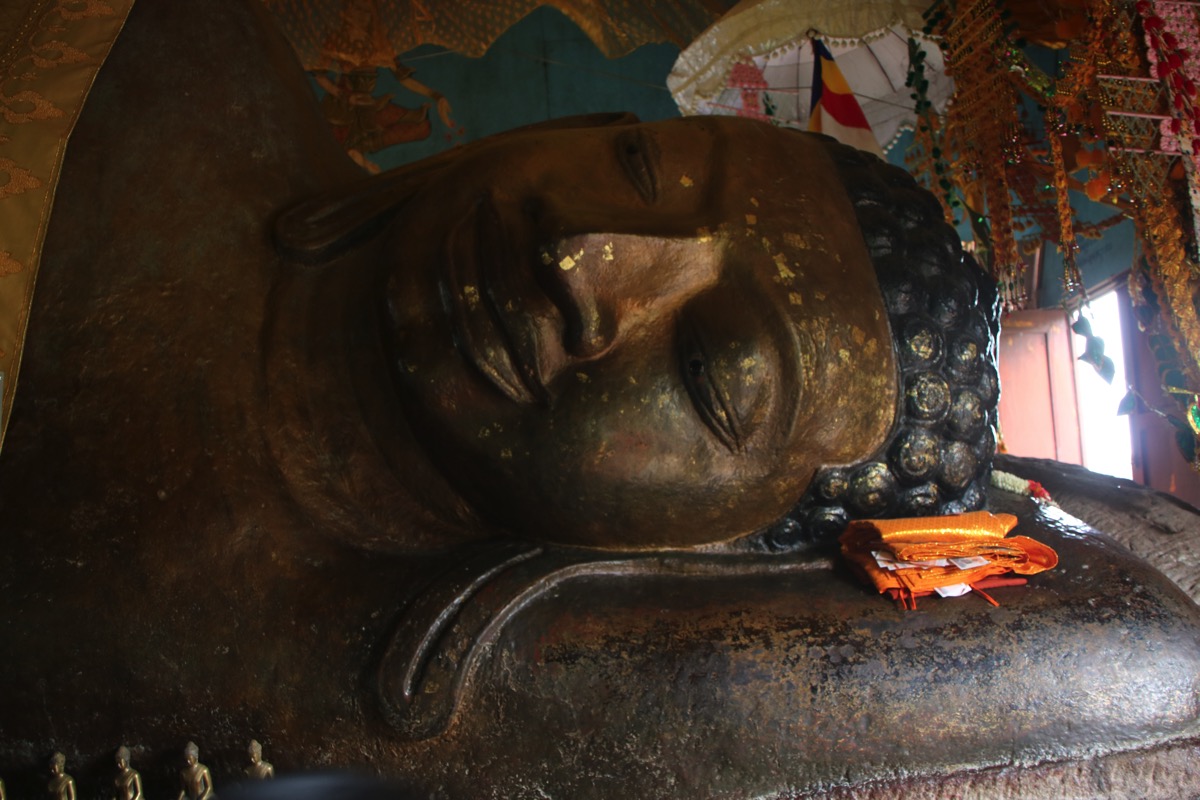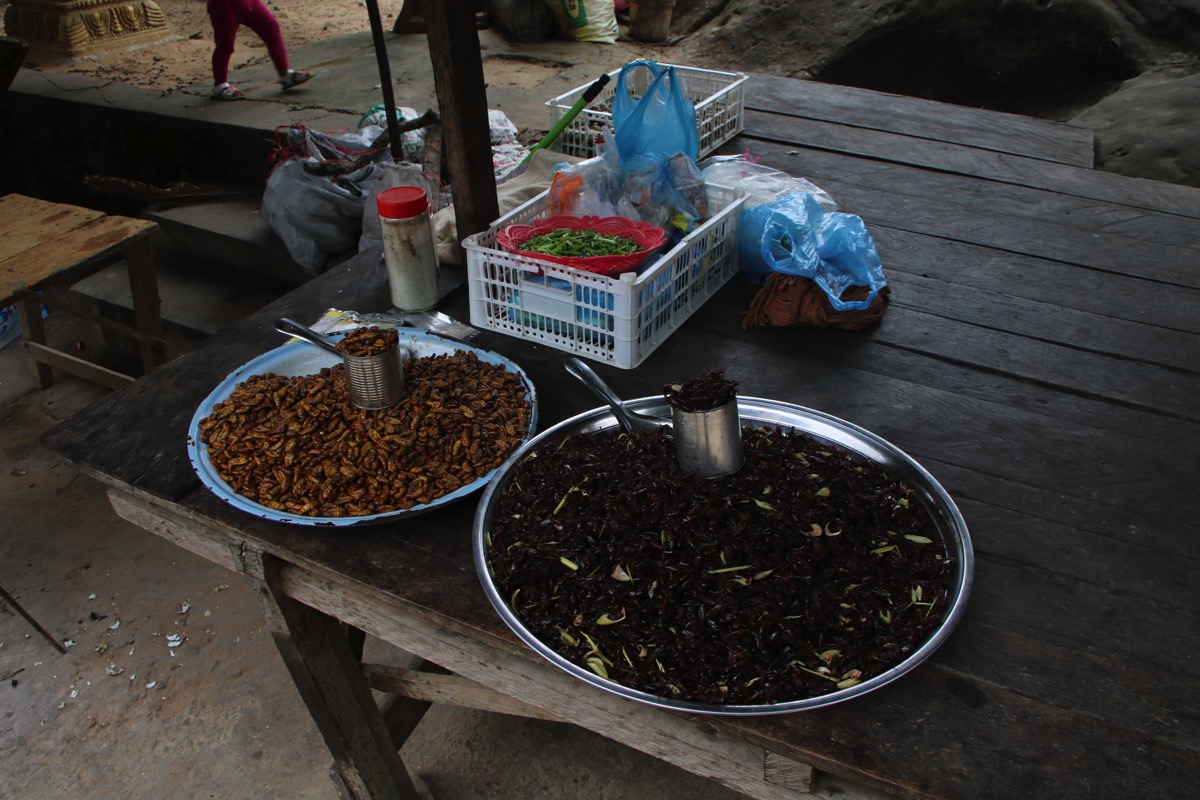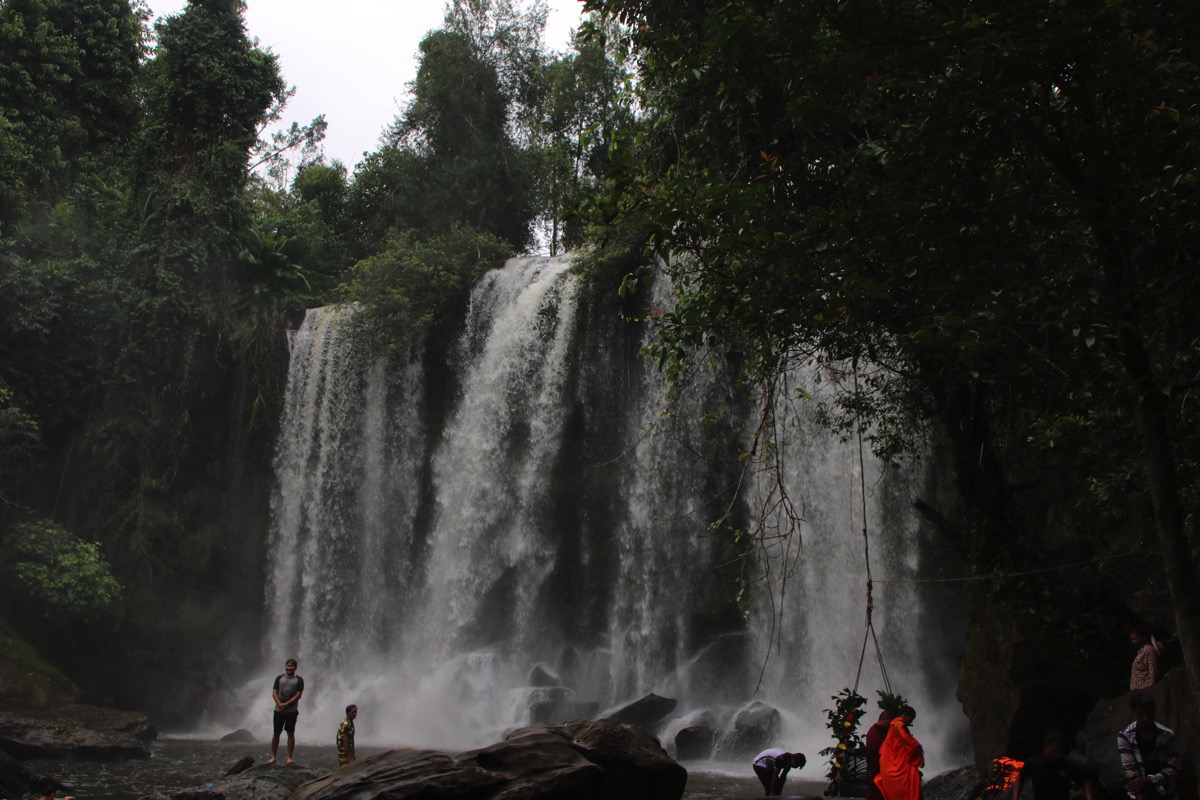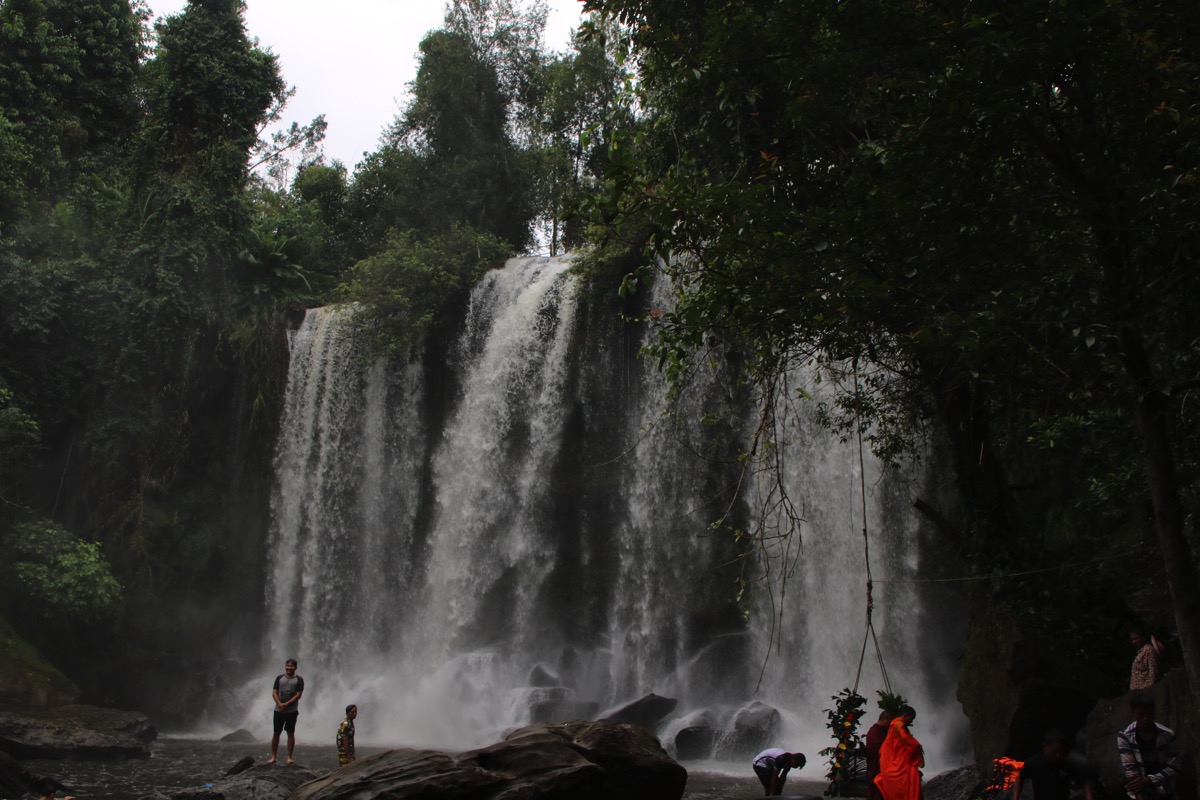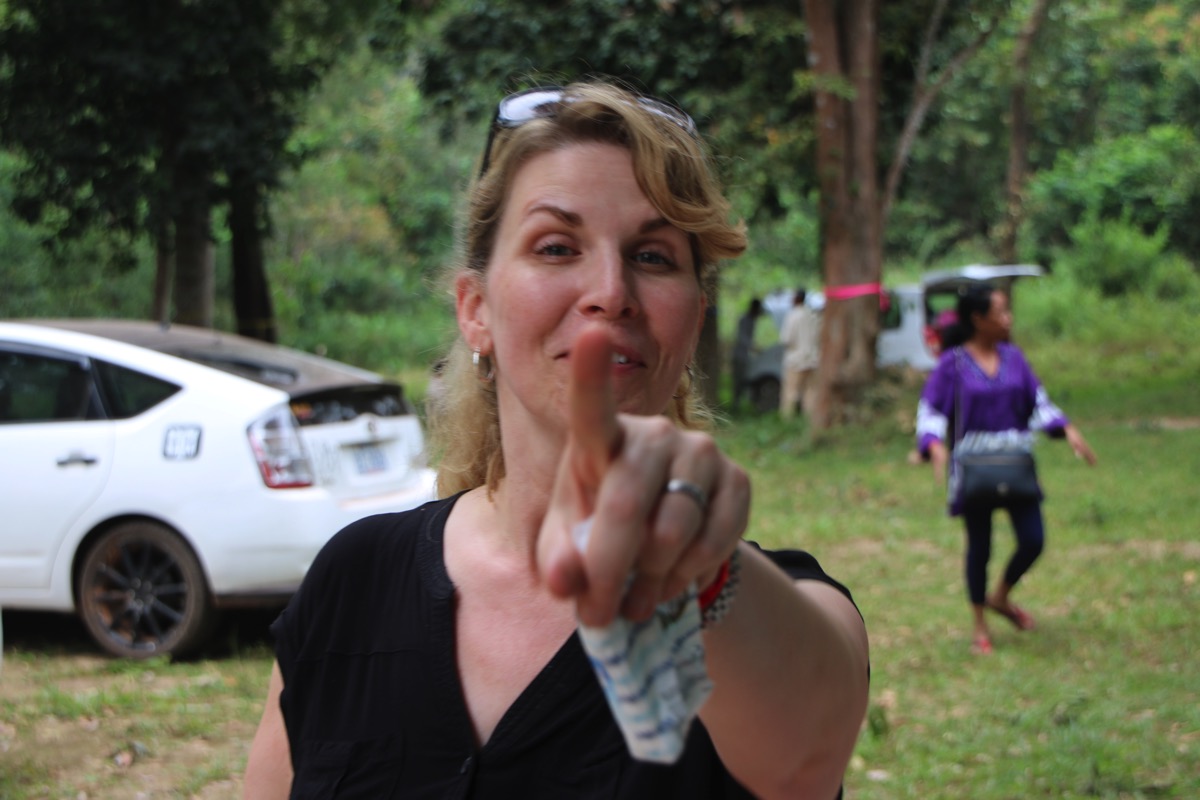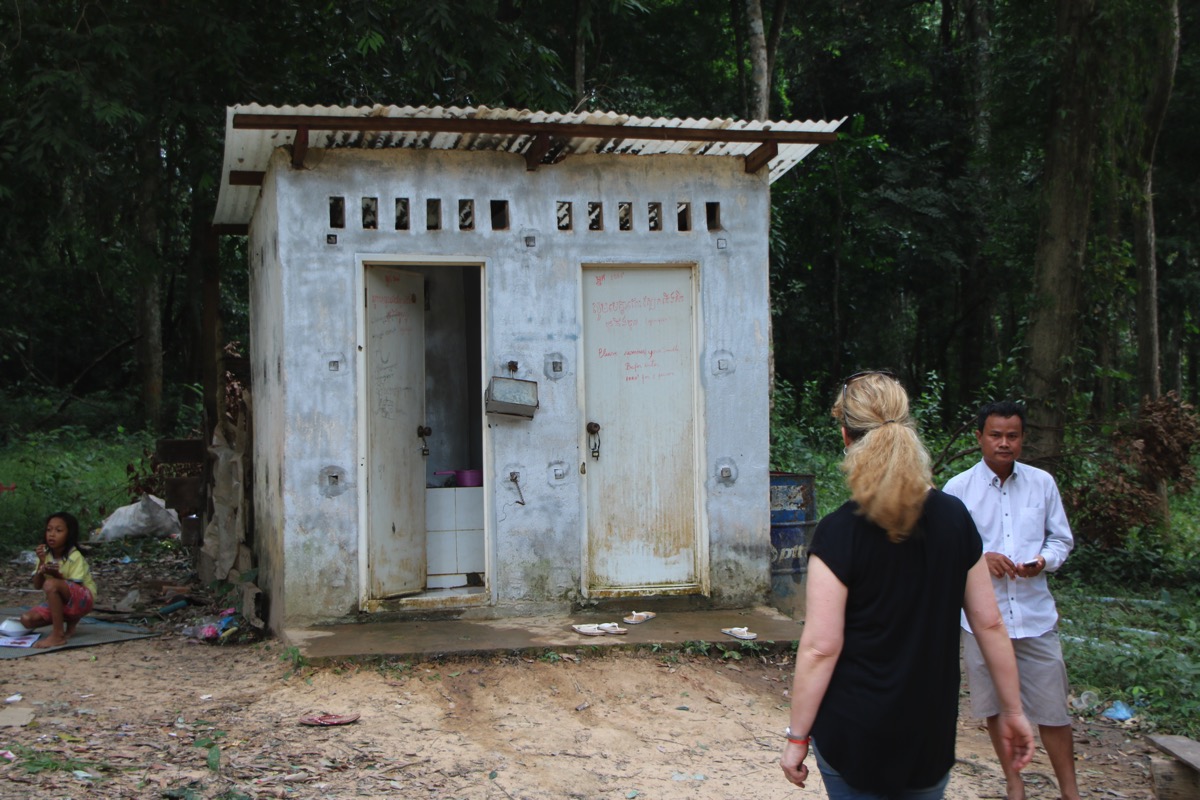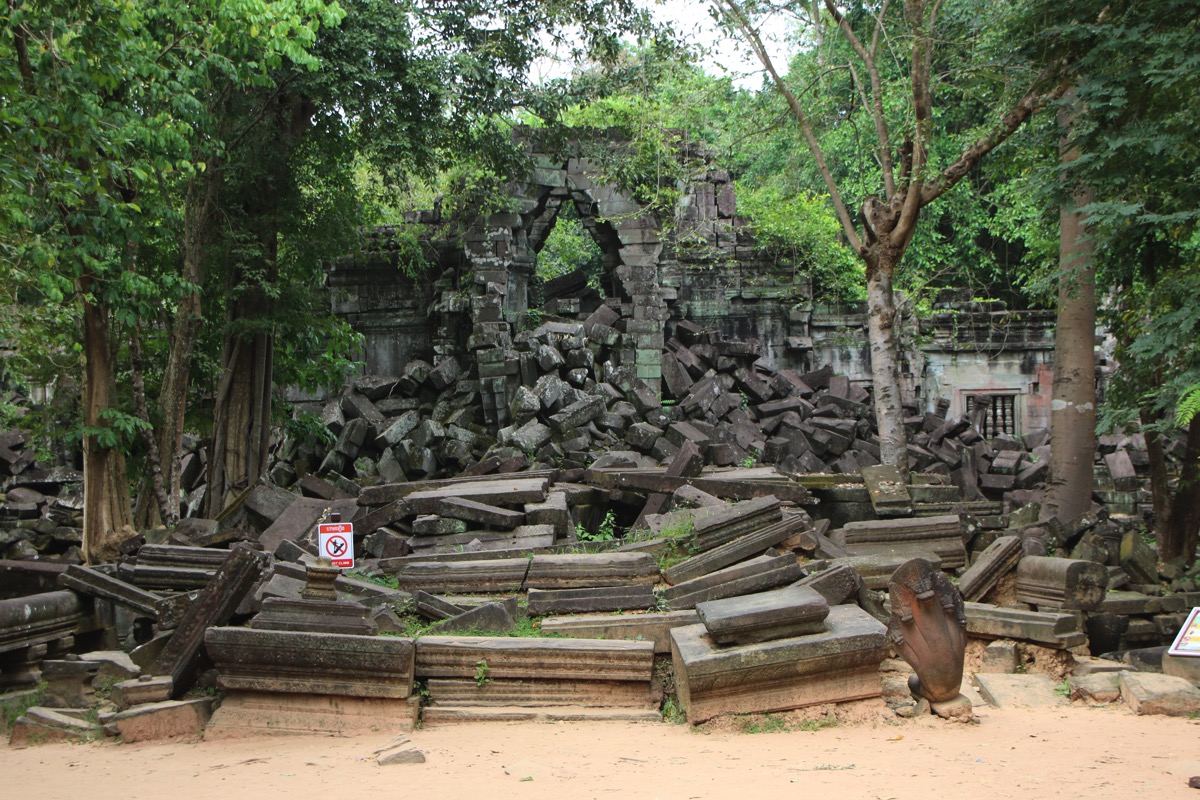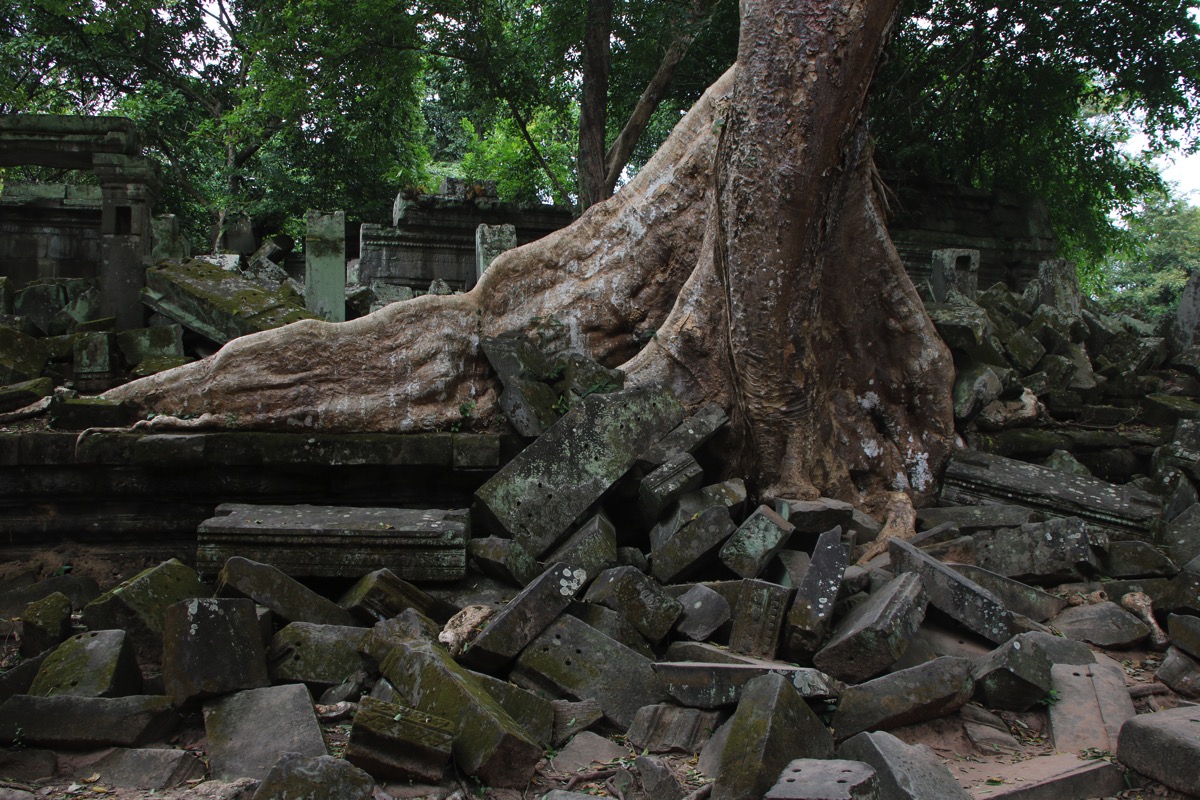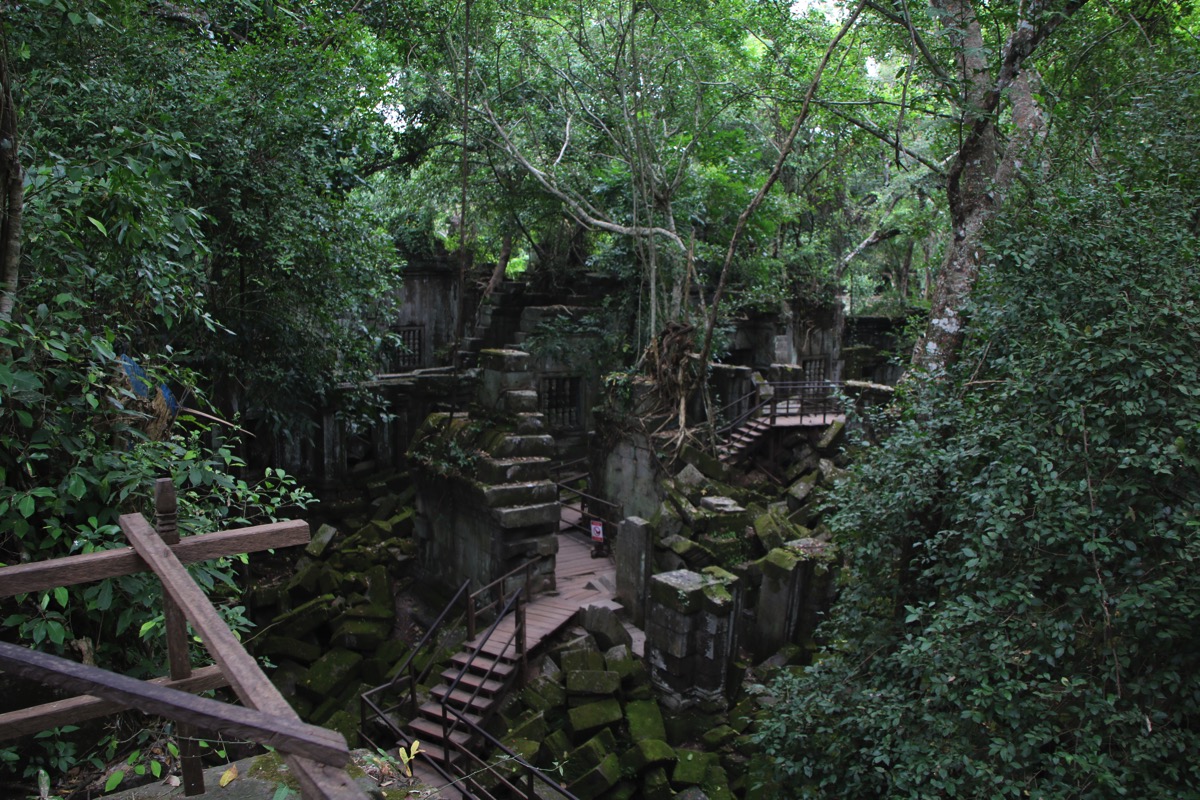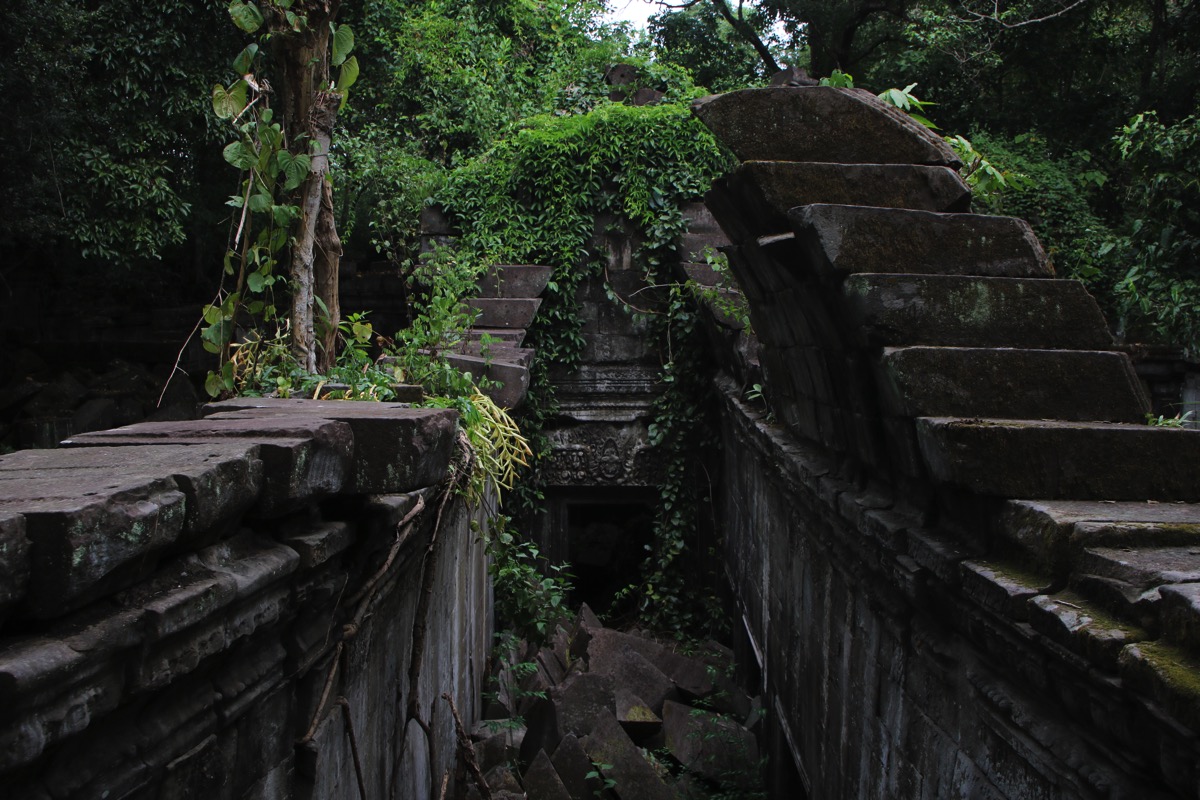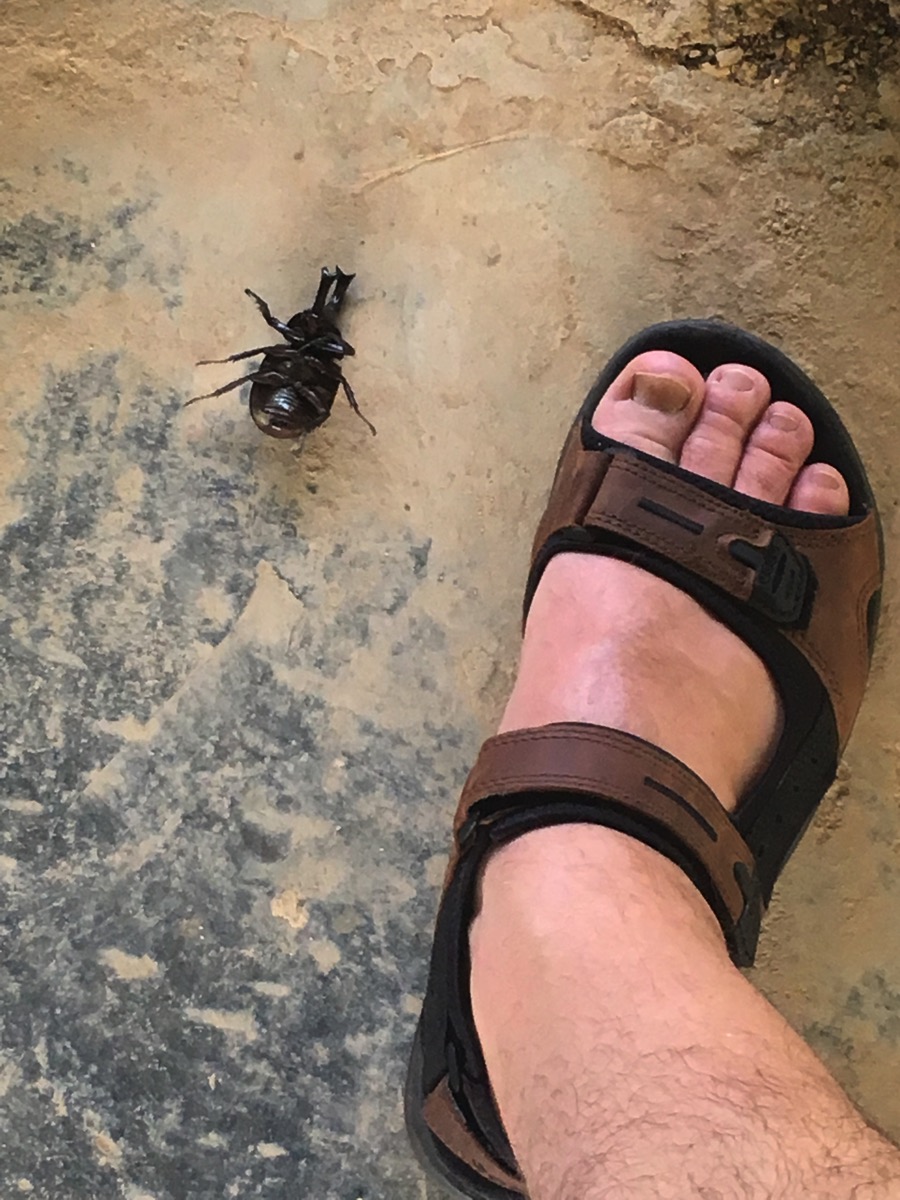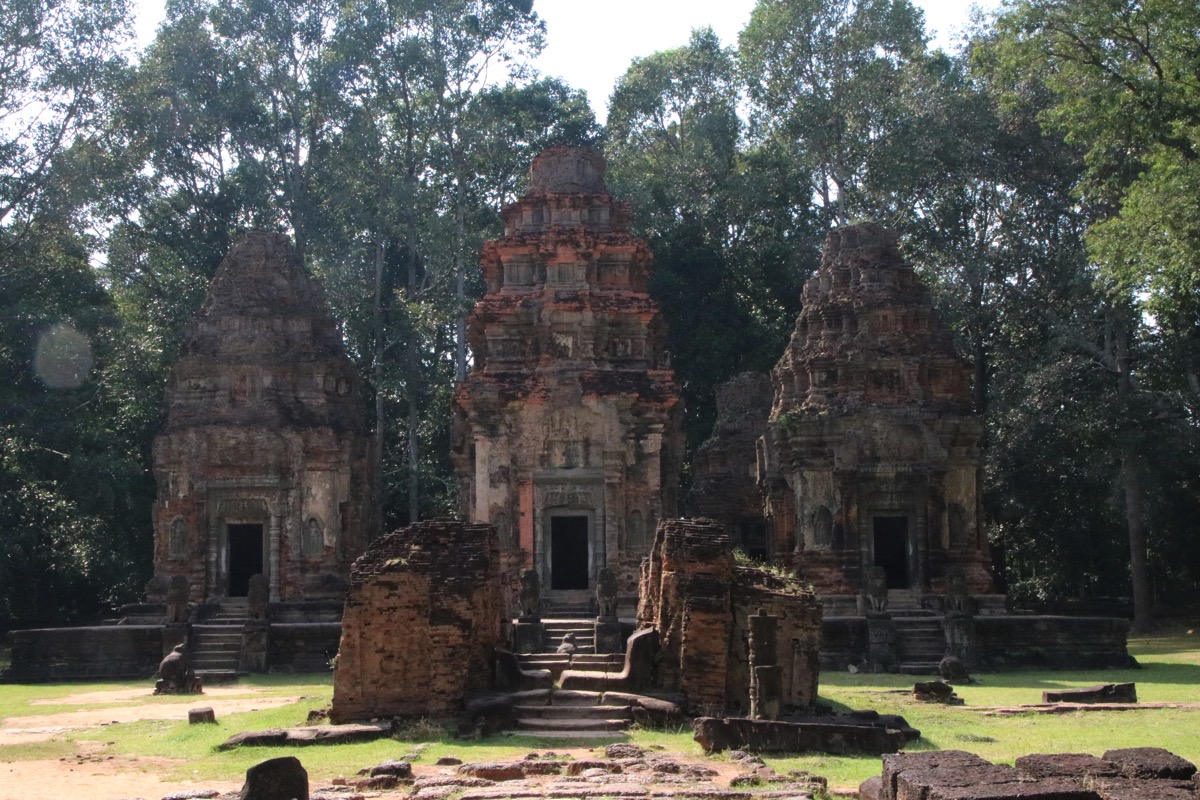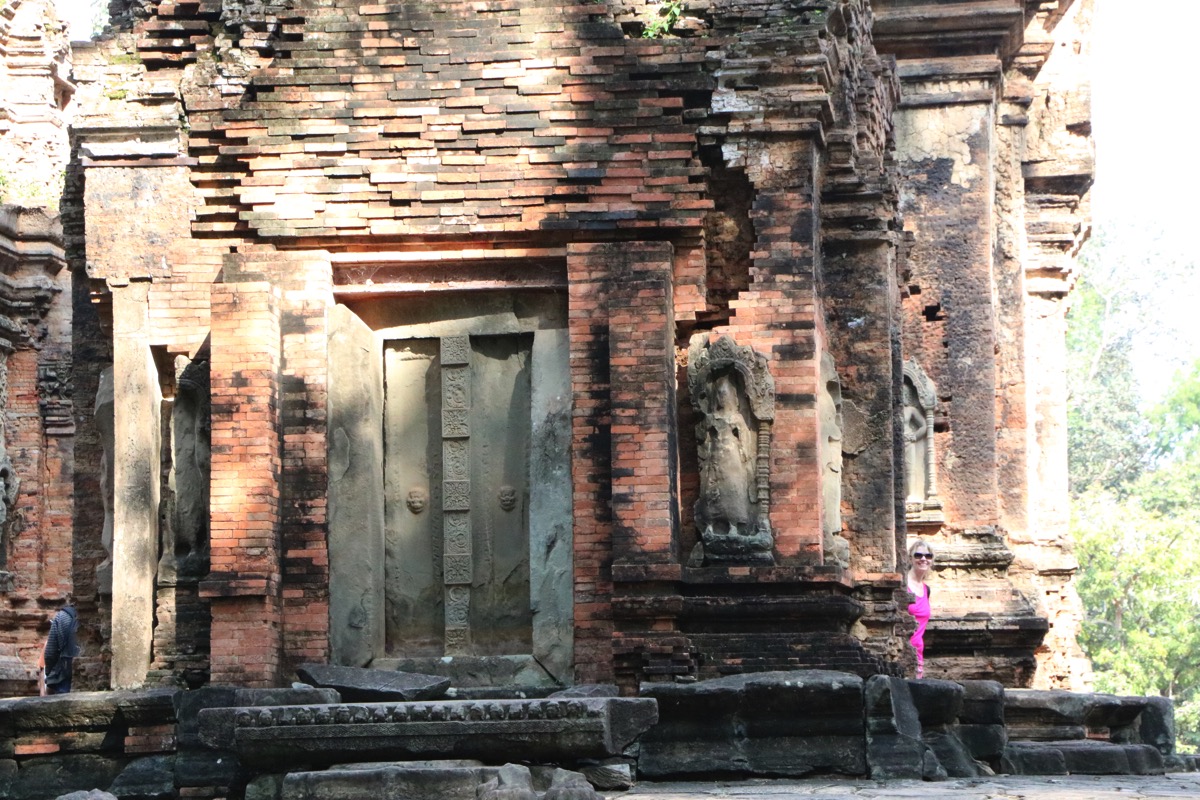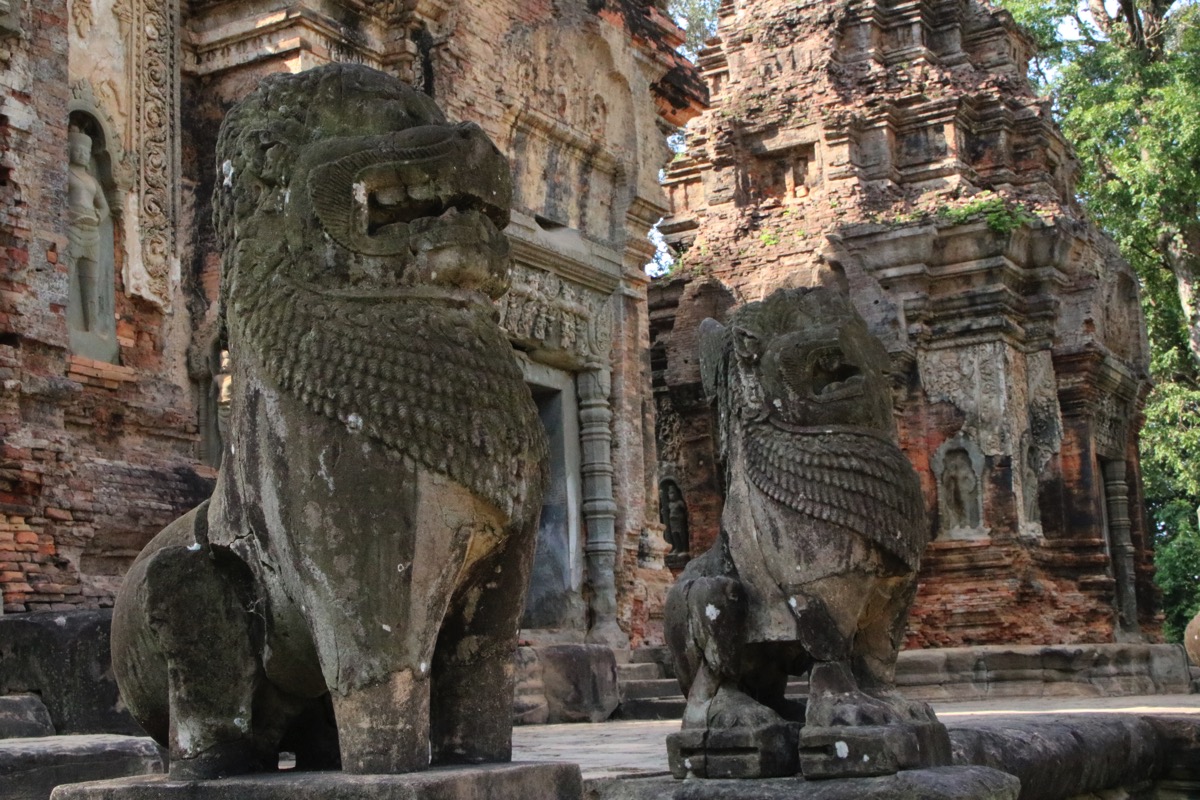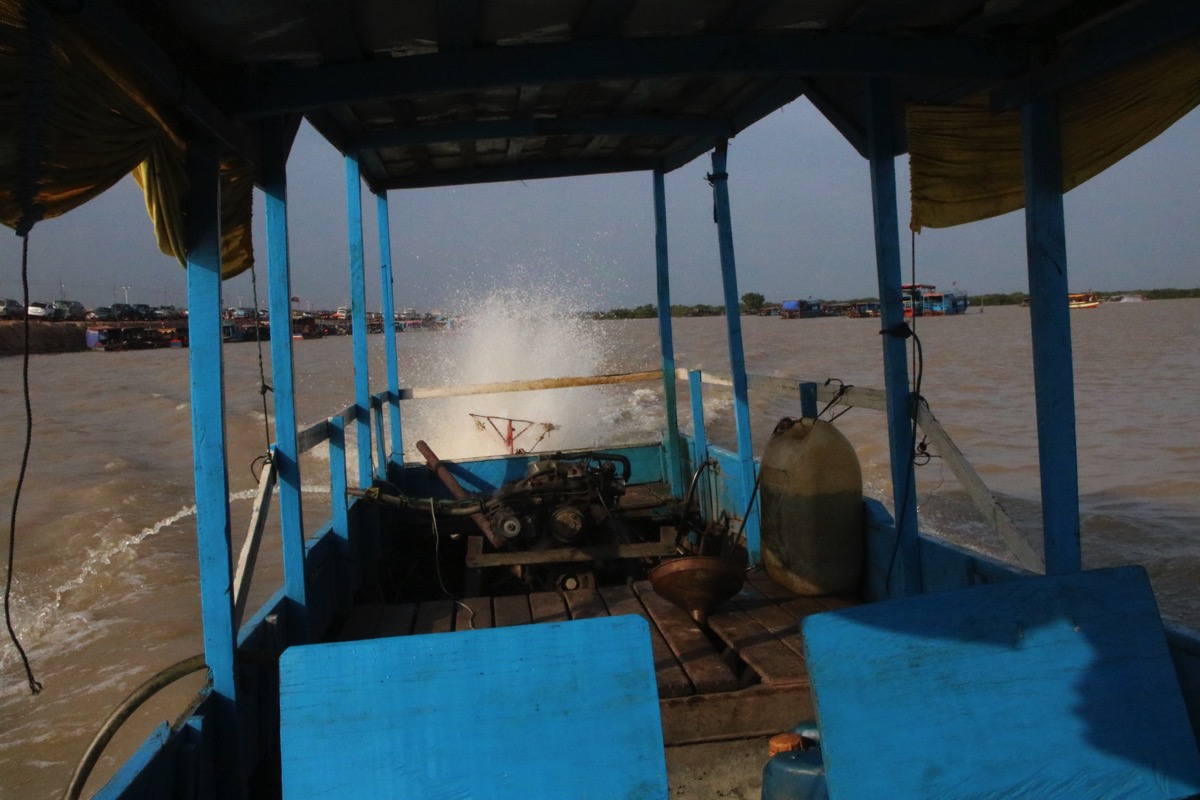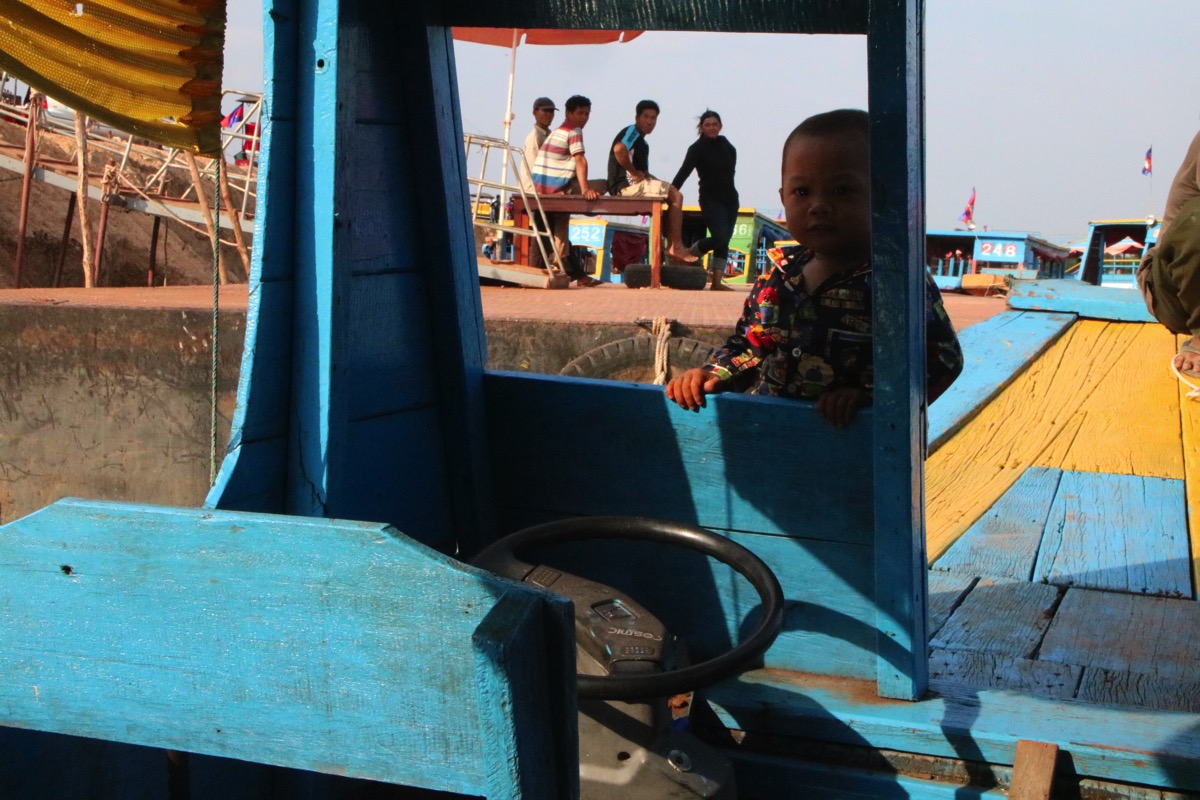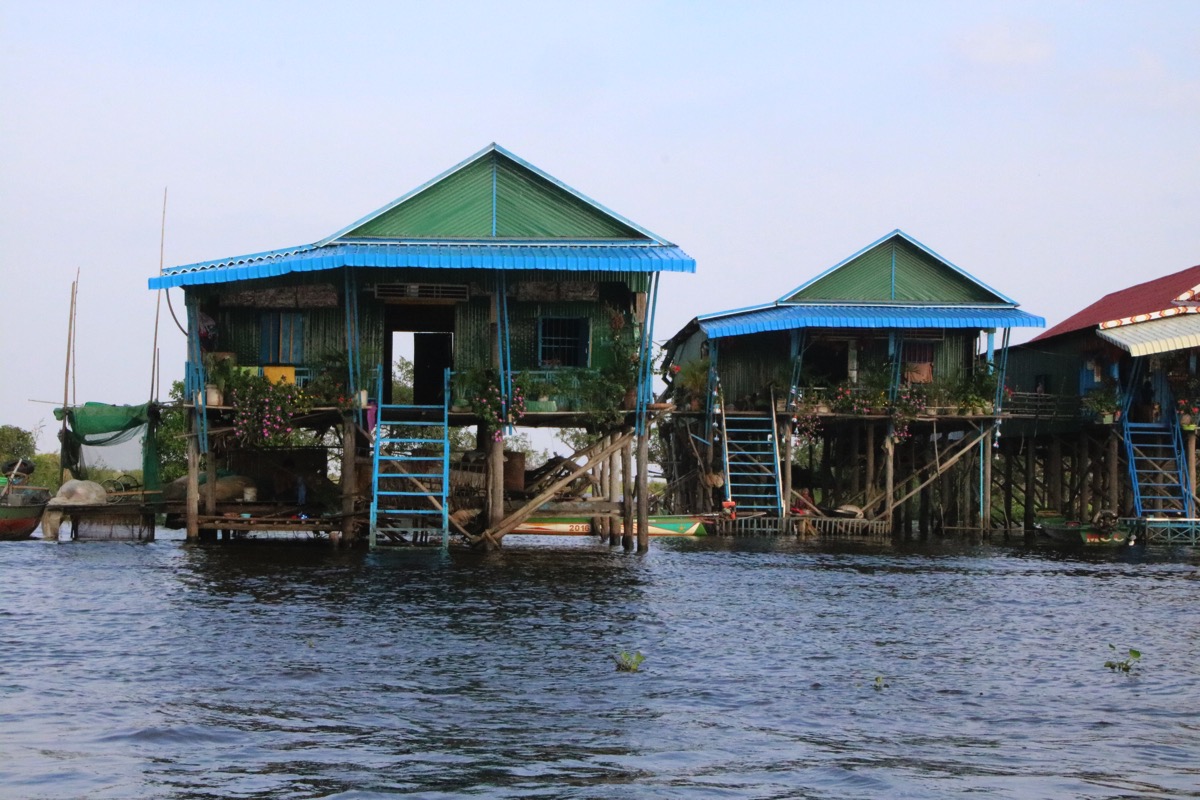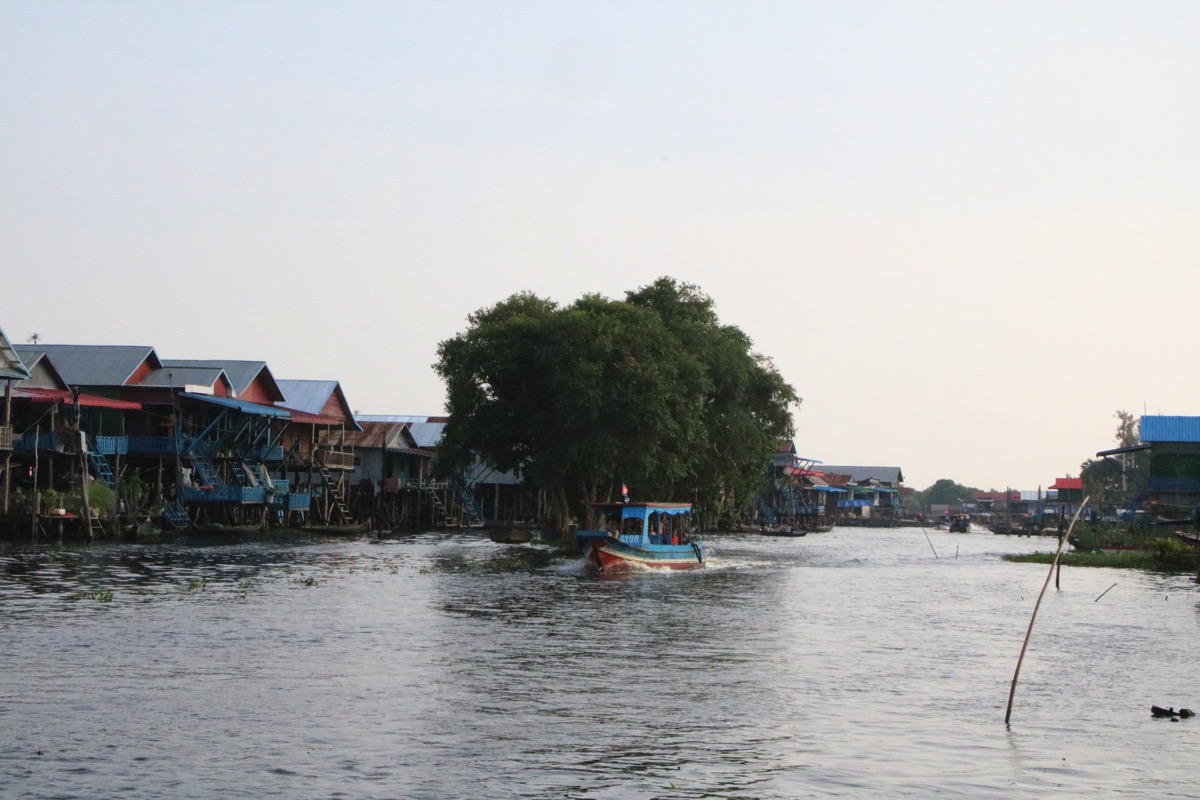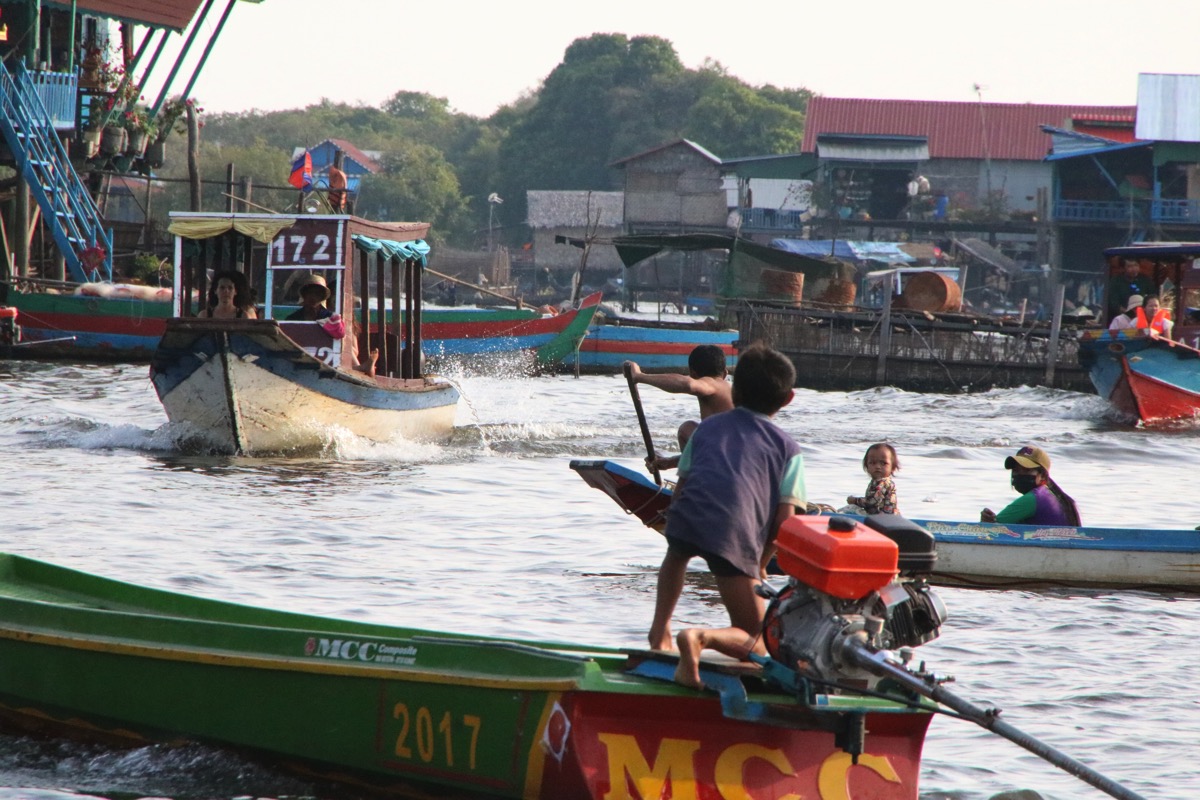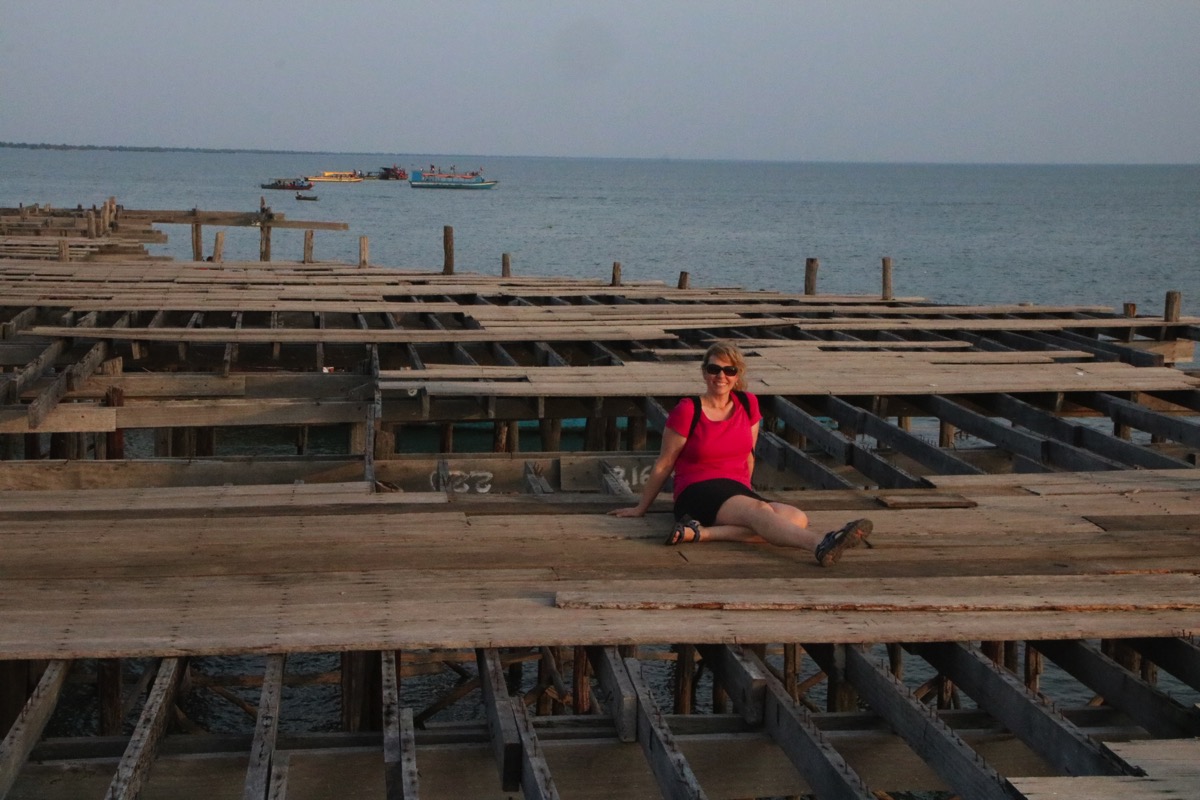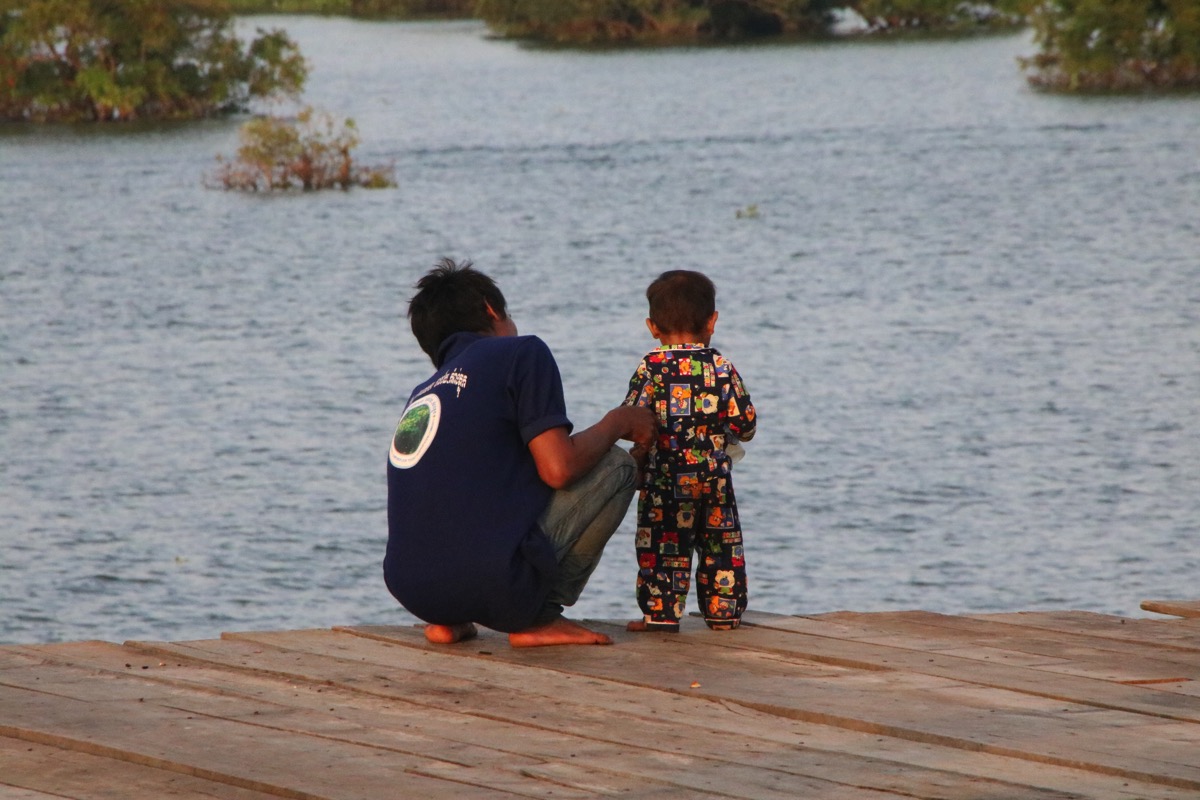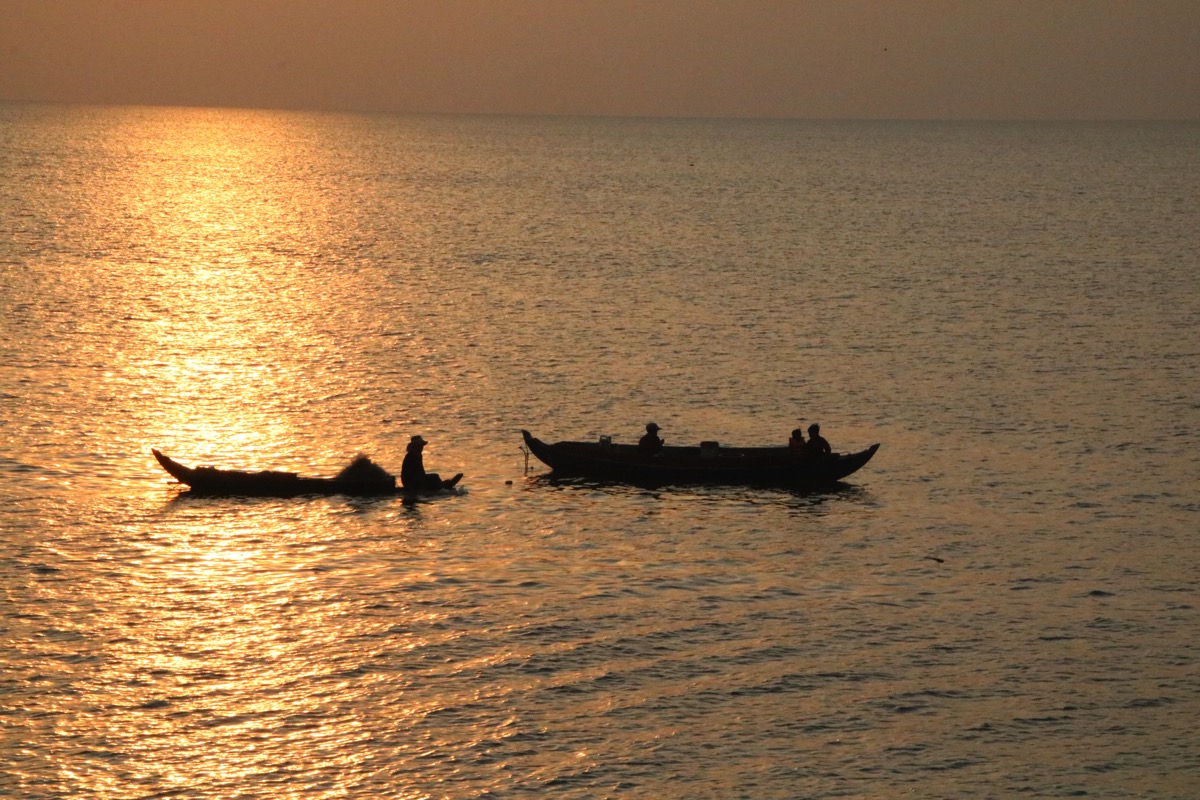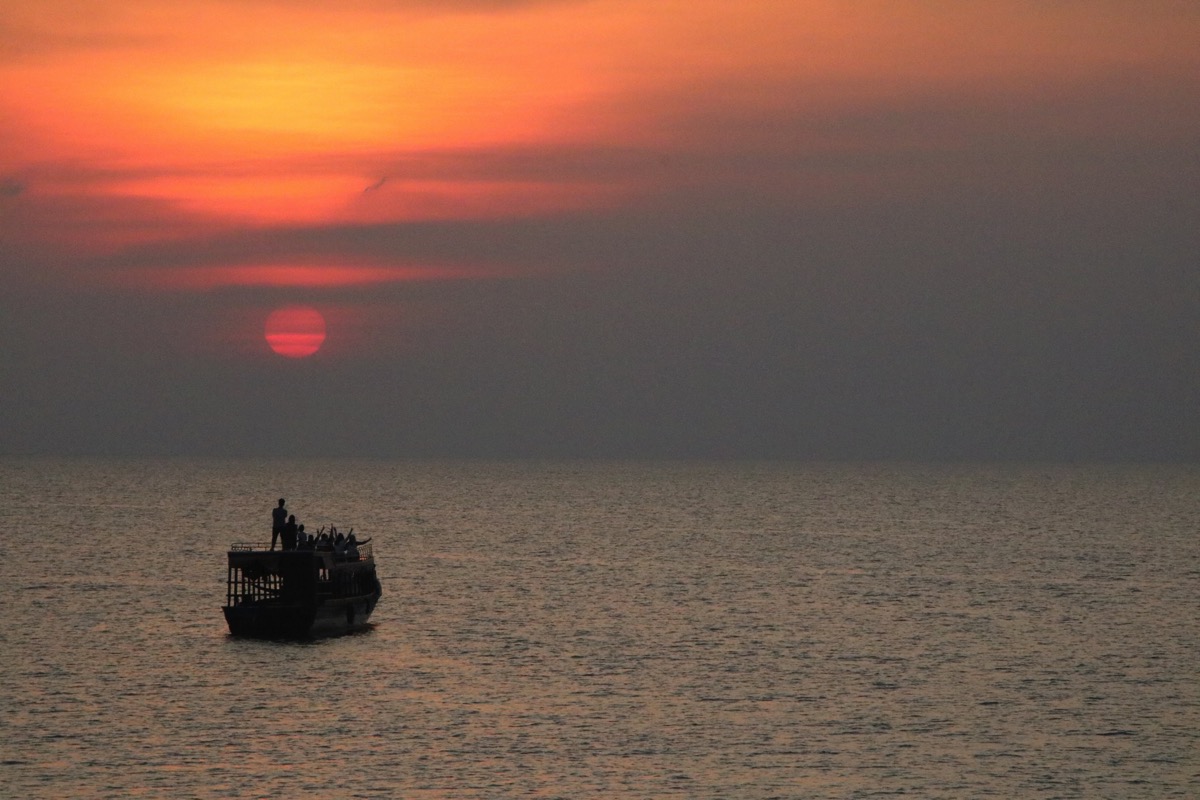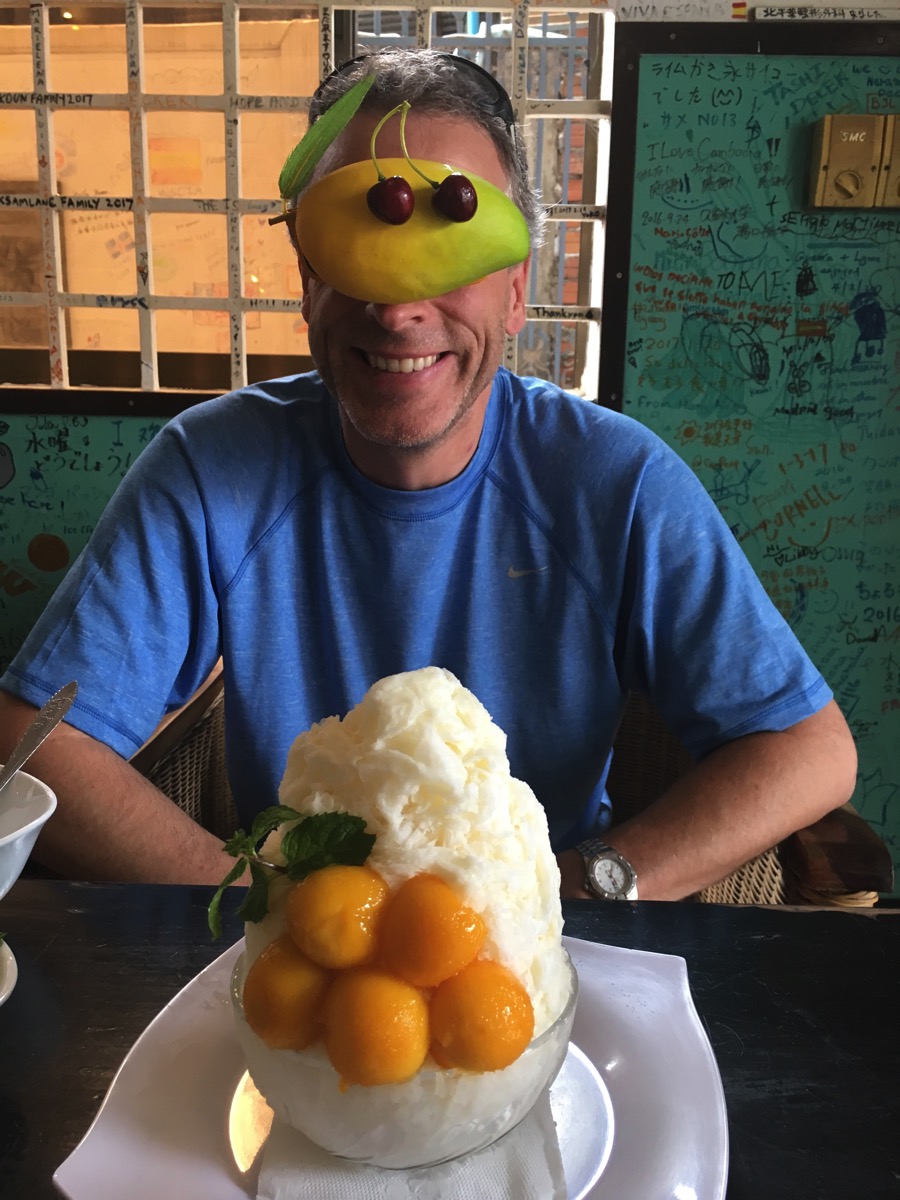Plenty to cover today so we’ll be skipping stories of the glorious egg tarts and fresh mango at breakfast and fast forwarding right to the Angkor Wat ticket counter. Because we’re so travel savvy, we pressed the agent booking our guide to pick us up at 7:30 instead of 8:30. That way, we’d be plenty far ahead of the tour busses and get a little quiet time to see the ruins and take pictures before the hordes descended. Problem is, about a thousand other people are even more savvy than we are and are already milling around the ticket office or climbing back aboard their busses to head to the gate. Our guide mumbles something about it being high season and then directs us to our queue.
Tickets in hand, we head back to the car for the short drive to Angkor Wat. Along the way, we get a brief introduction to the history and an outline of our itinerary for today. While Angkor Wat is the most well known of the Khmer temples (and the largest religious monument in the world) it is just one of over a thousand in an area covering 400 square kilometers. It is neither the biggest site (Angkor Thom), oldest (Phnom Kulen), most ornate (Banteay Srei), or a host of other characteristics, however, it is the one people come to see by name so is where our tour begins.
To dodge some of the biggest crowds, our guide takes us to the less popular the back gate. There he rambles on for far too long about Buddhists and Hindus, creators and destroyers, heaven and hell, blah, blah, blah. There are some interesting nuggets here and there, but most of it we picked up at the museum already, and this early in the morning, it has the power of a handful of Ambien. Once we are in motion however, he manages to find us some good photo opps and doubles as a pretty good cameraman.
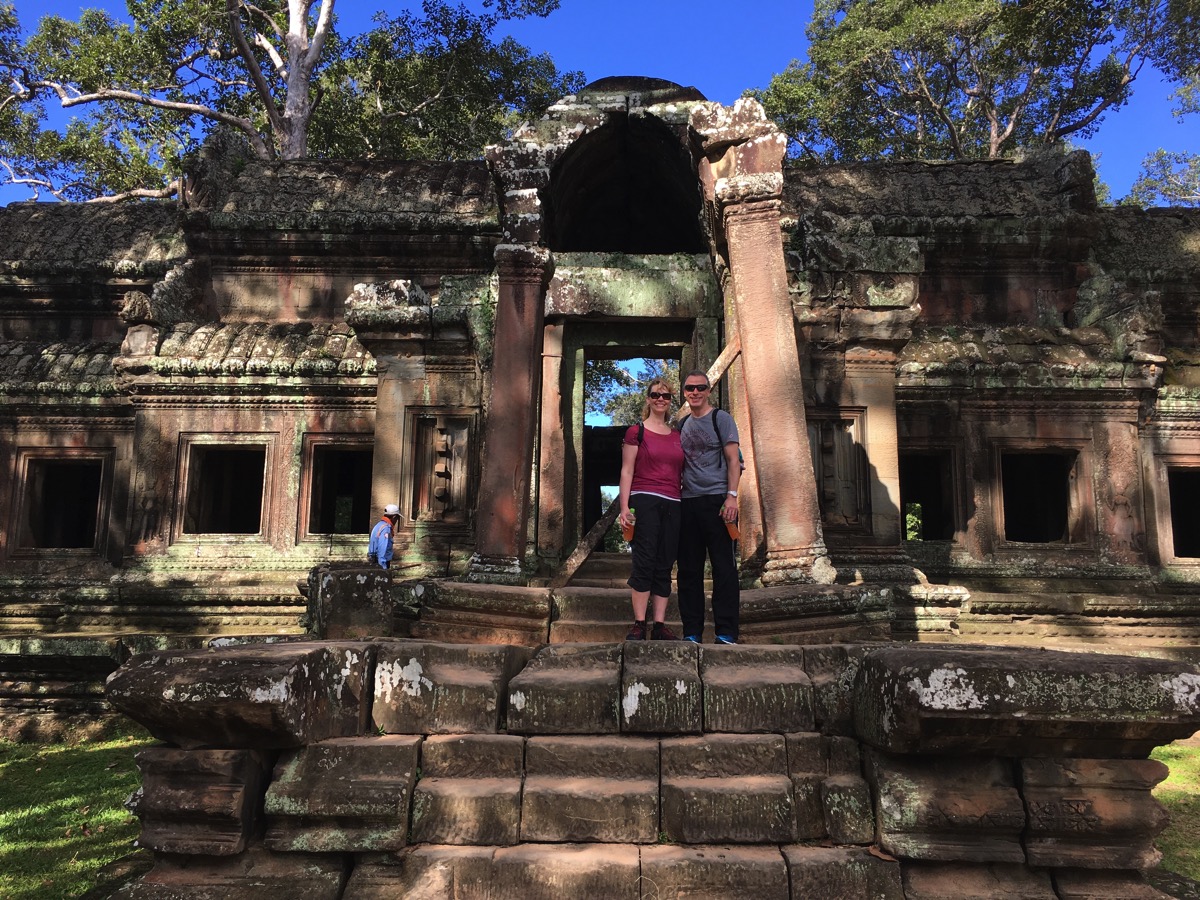
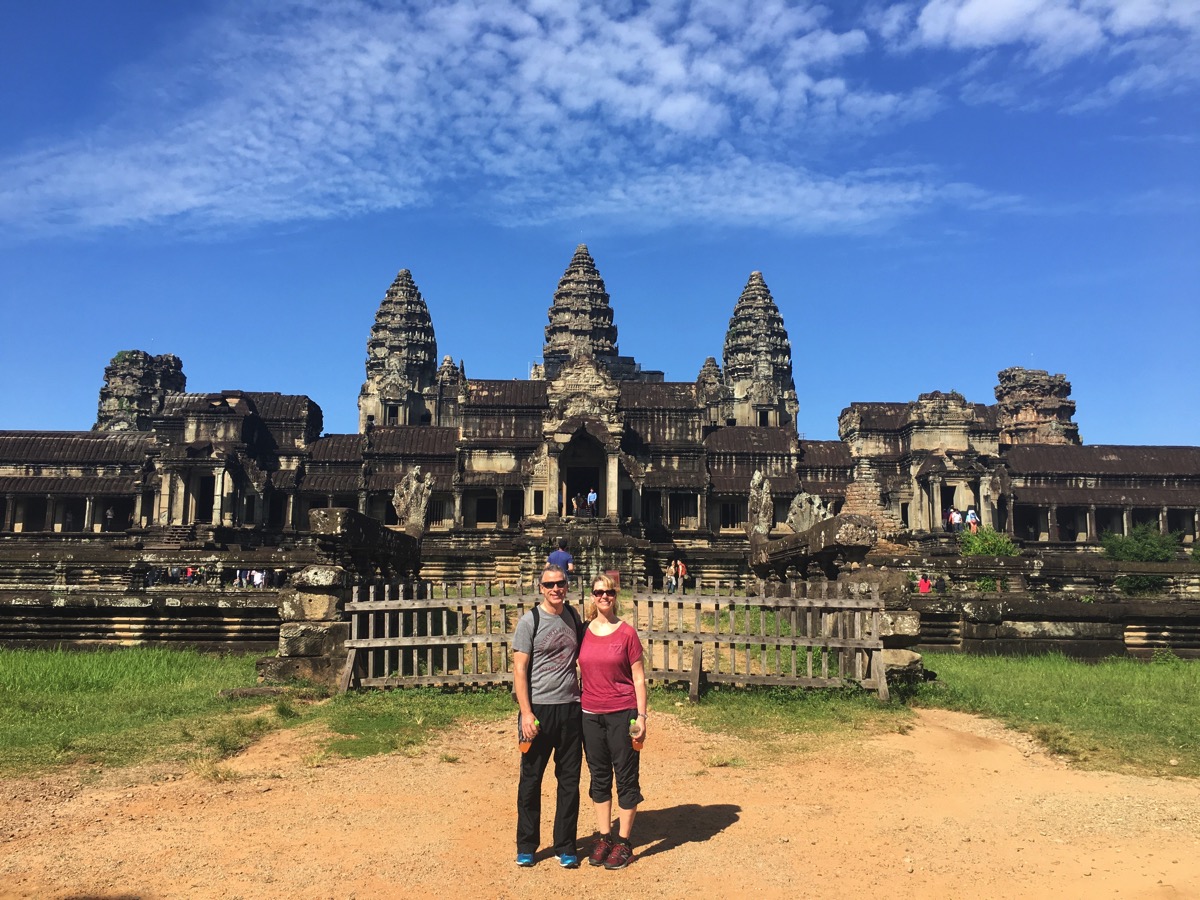
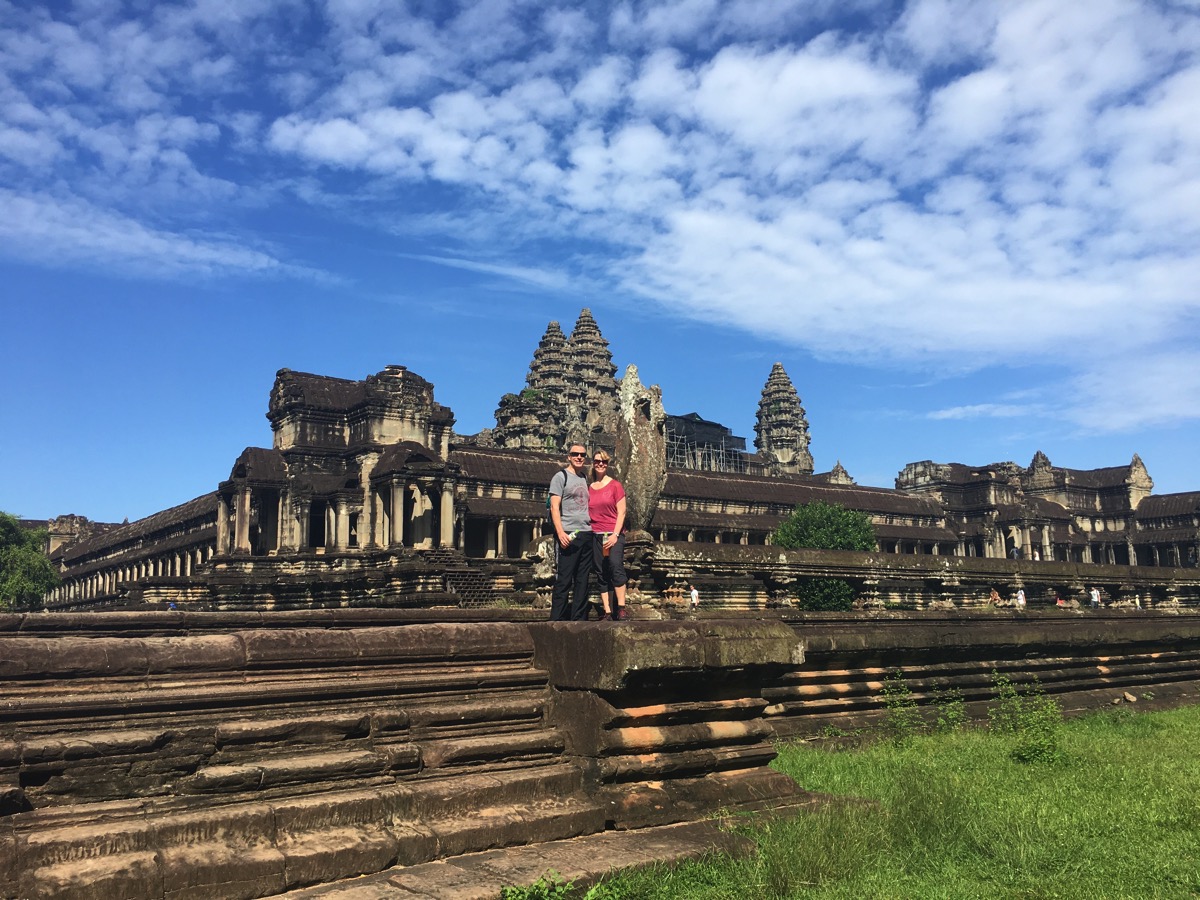
Inside the temple itself, its an absolute madhouse. People are going every direction, selfie sticks are waving all over the place, and tour guides with their flocks of sheeple are struggling to talk over each other in a variety of languages. It feels like Wal-Mart on Black Friday.
Angkor Wat is set out in three concentric layers. The first is the most artistically interesting, with detailed, bas-relief carvings covering the other walls. These tell a collection of stories including the Churning of the Ocean Milk and depictions of rewards and punishments for 37 heavens and 32 hells (one of the latter being jam-packed in a narrow cloister in humid, 90 degree heat, all while wearing temple-friendly full-length pants). The angles and crowds don’t really allow for any good pictures, but there are plenty on Google if you need a visual.
The second layer contains a number of galleries, courtyards, pools (now empty), and of course access to the final level, with its tower said to represent the mythical Mount Meru.
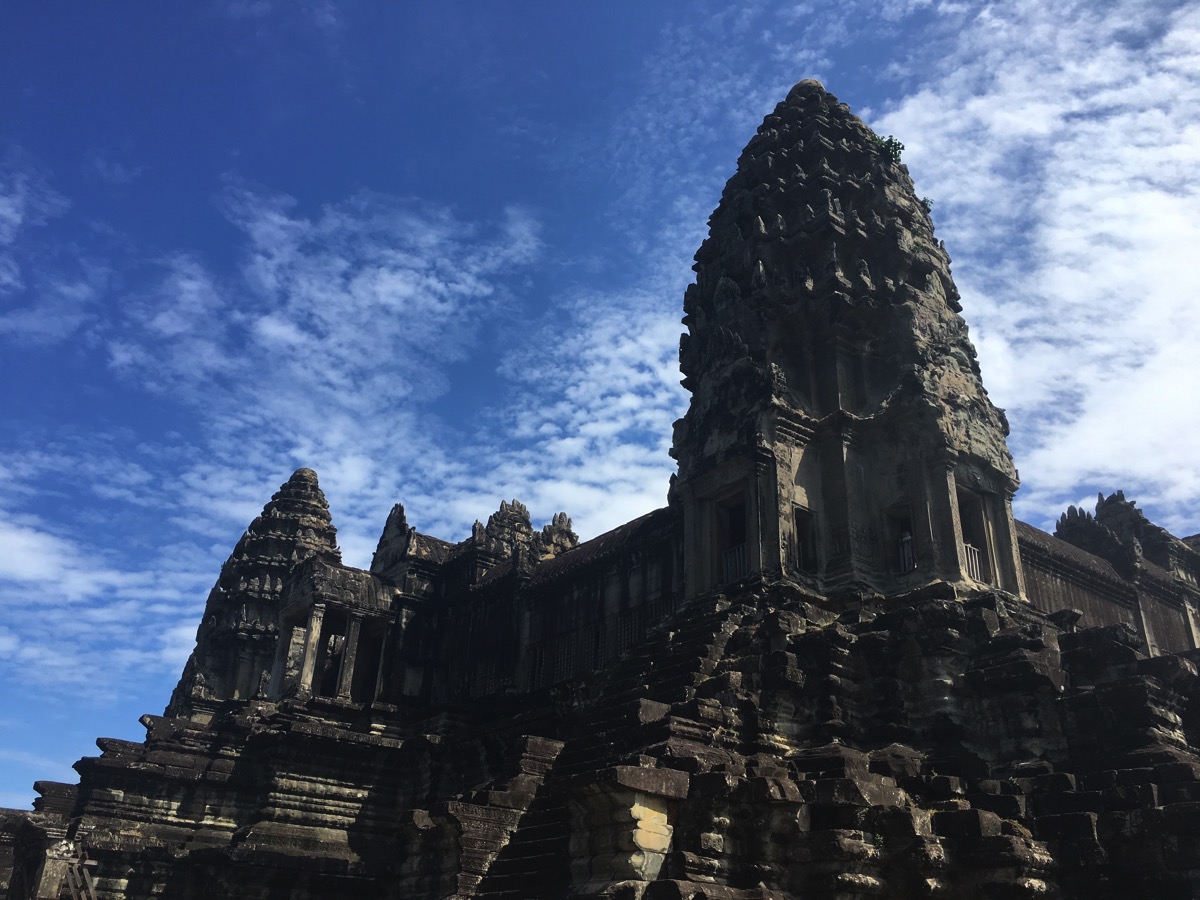
There is also a monk here giving out blessings, and since you can’t have too many of those, we decide to pick one up.
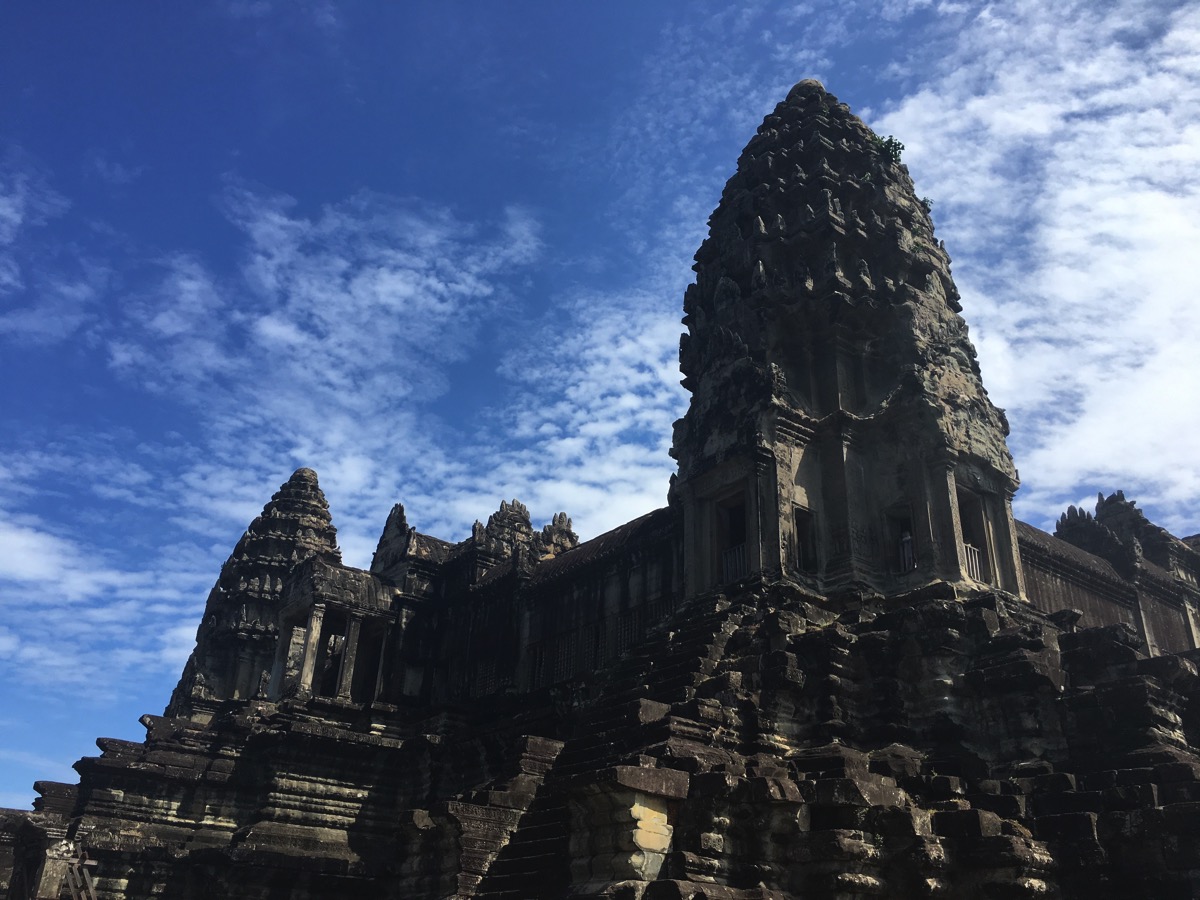
Because space is more limited the higher up you go, only 100 people at a time are allowed past this point. With the festival and peak tourist season kicking in, that means a pleasant 45-minute wait under the mid-day sun before ascending to level three (according to our guide, the lines get longer and the temperature higher the later in the year you get, so I guess that blessing is coming in handy and we aren’t here on New Year’s Day).
It is noticeably less chaotic, allowing time to take in the carvings and eagle-eye views of the entire complex.
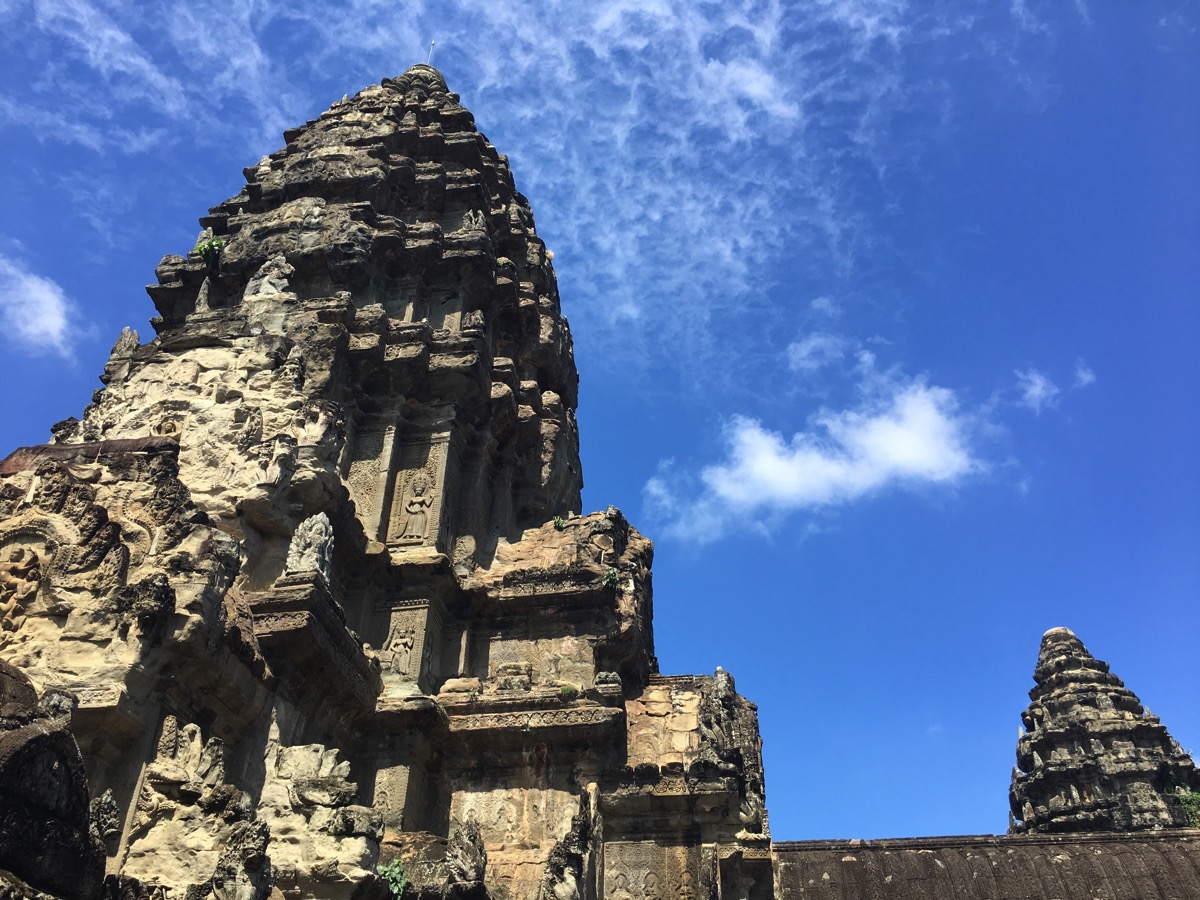
One interesting observation is that when looking at the apsaras (dancing nymphs from Indian mythology), all of their boobs are shiny. Not their faces, not their feet, just their boobs. There is a stature in Las Vegas where the finger is all shiny from people rubbing it for good luck, so maybe that explains it. Building full of roosters, statues of naked ladies, the math sort of works out.
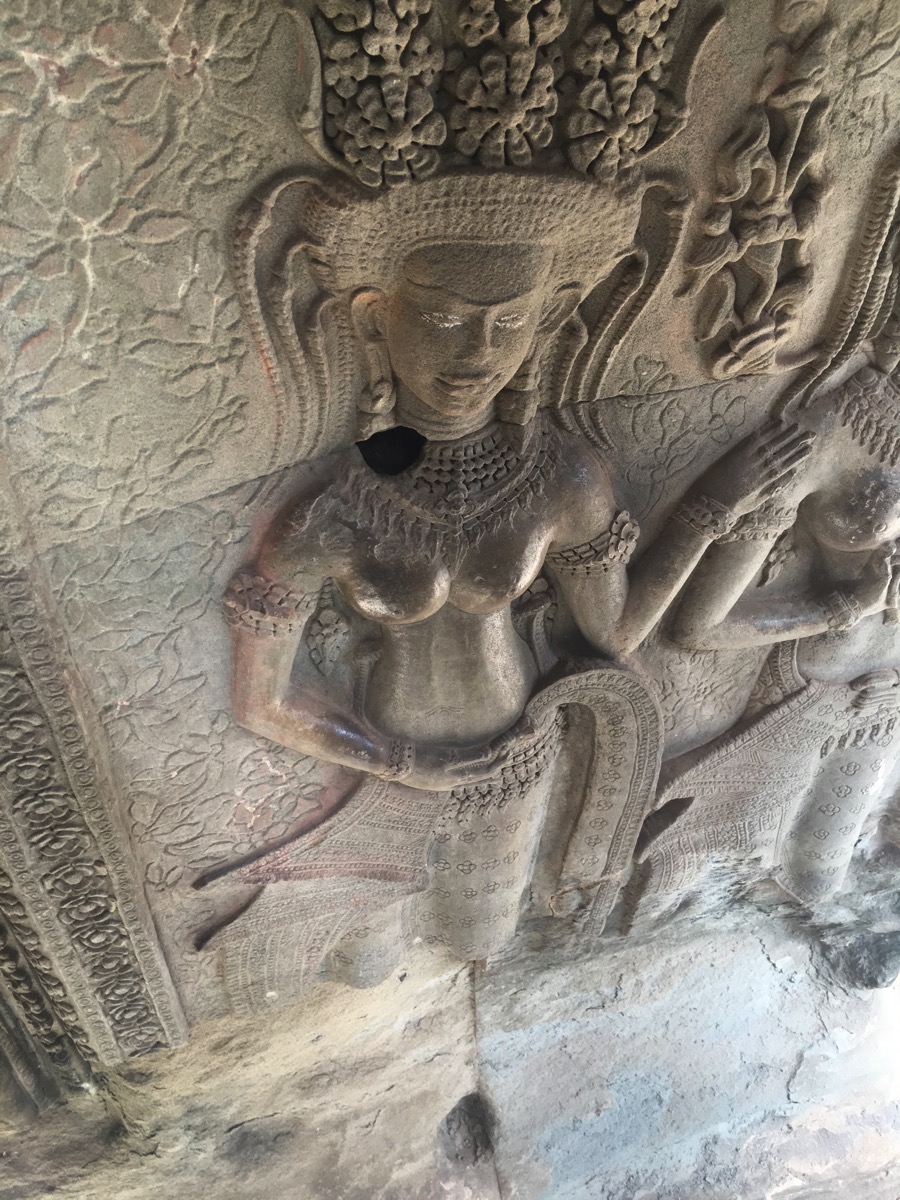
After breaking for lunch, we are off to Ta Prohm, a 12th century temple made famous by its cameo in the movie Tomb Raider. Like all temples in the area, it was abandoned as the Khmer empire went into decline, and over the years, was reclaimed by the jungle. The trees and stones now exist in a state of symbiosis, making for countless mind-bending views. There is slow work underway to restore this site, but it’s hard to say whether peeling back the layers of overgrowth will make it better.
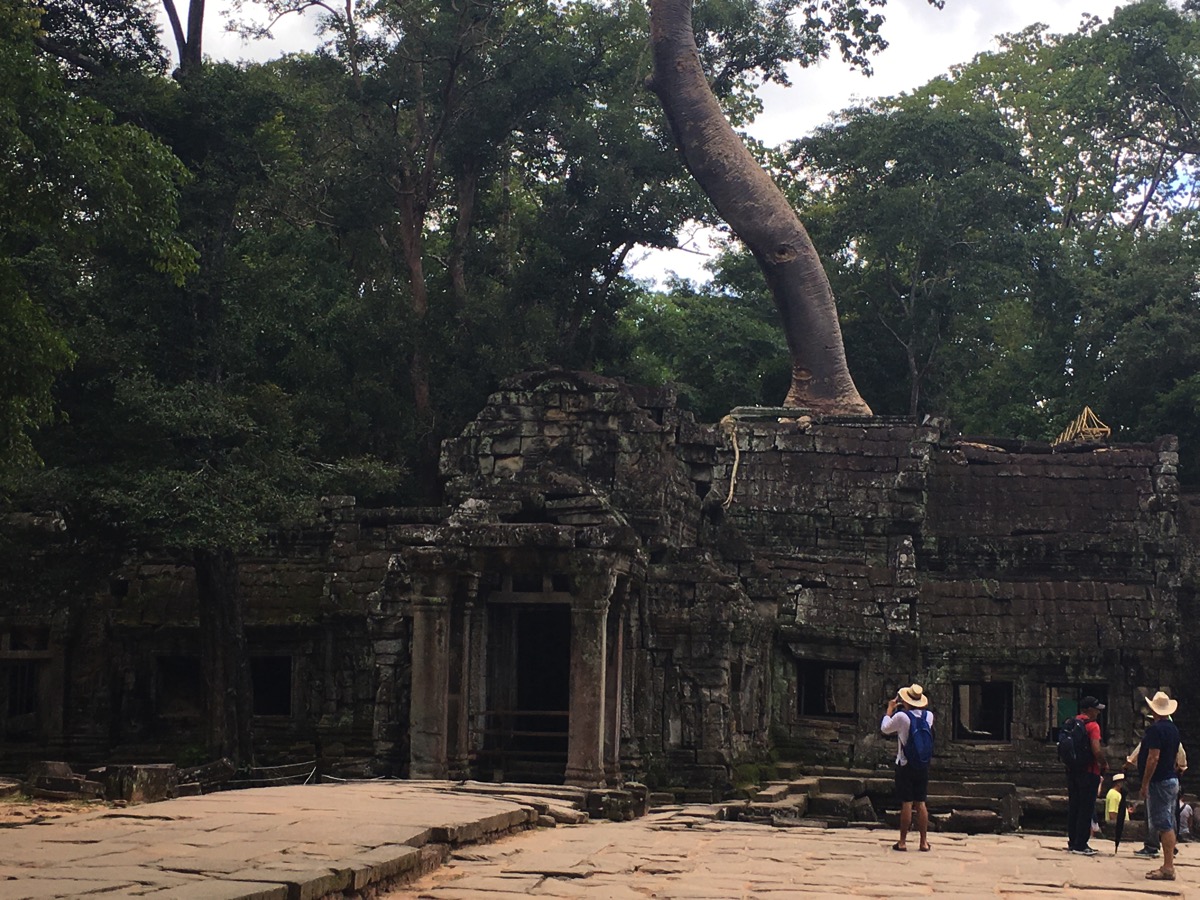
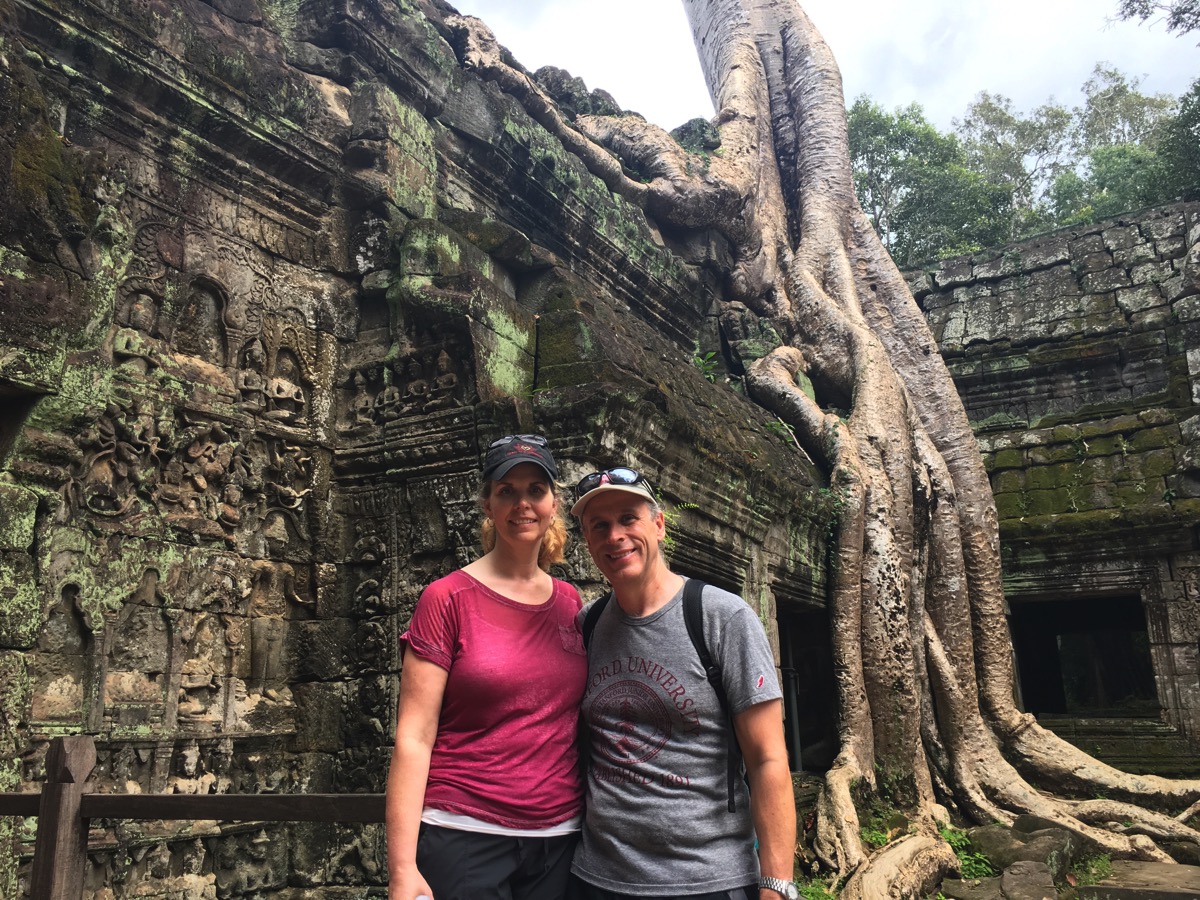
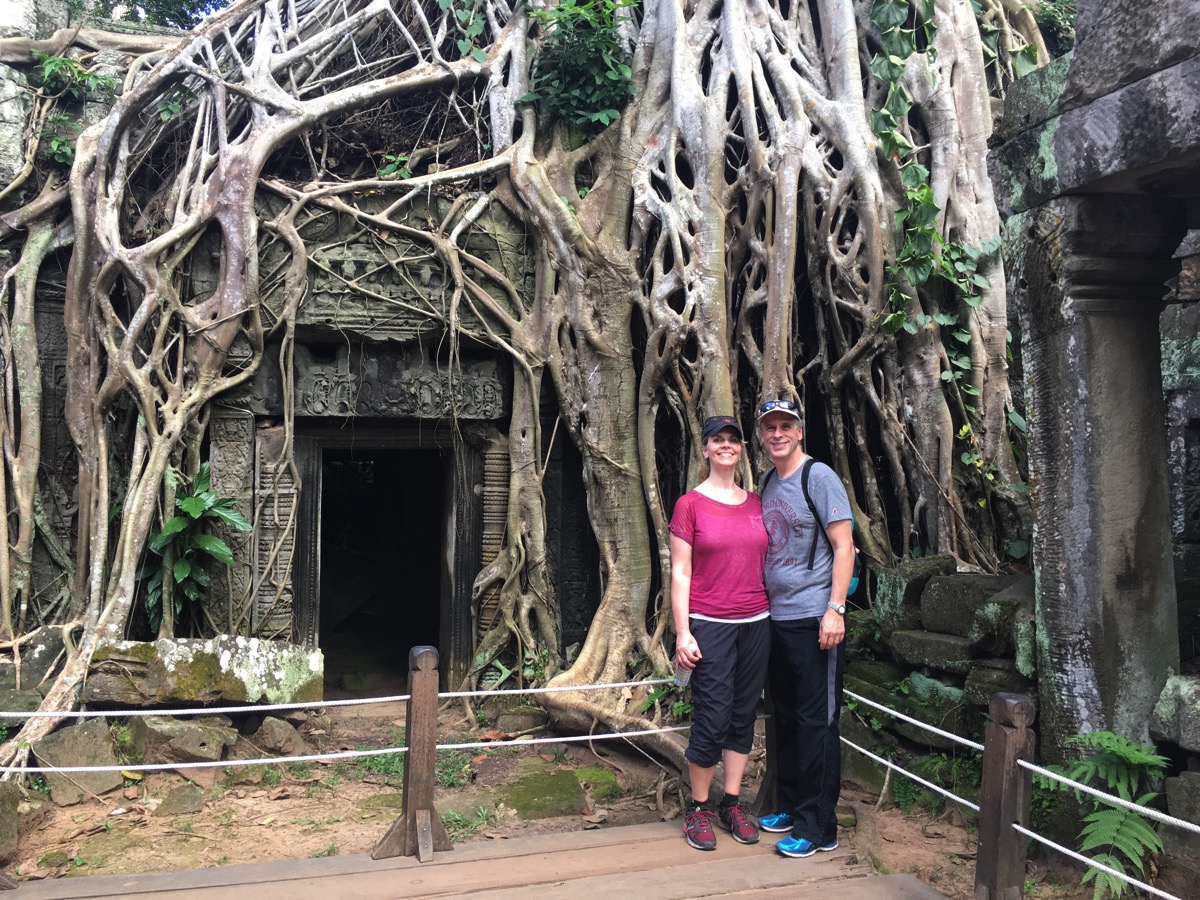
Our pace is noticeably faster now, and in fairly quick succession we tick off the three main sights in Angkor Thom the royal residence, Baphuon (which was meticulously taken apart for restoration prior to the Khmer Rouge coming to power and pieced back together despite all of the records being destroyed), and finally, Bayon.
Of these, Bayon is the most well-known, due to its rich carvings and multitude of smiling faces peering out from the towers. It is also the last temple built at Angkor. Of course, with popularity comes tour busses, selfie-sticks, and people blocking narrow pathways and staircases posing for self-styled glamor shots.
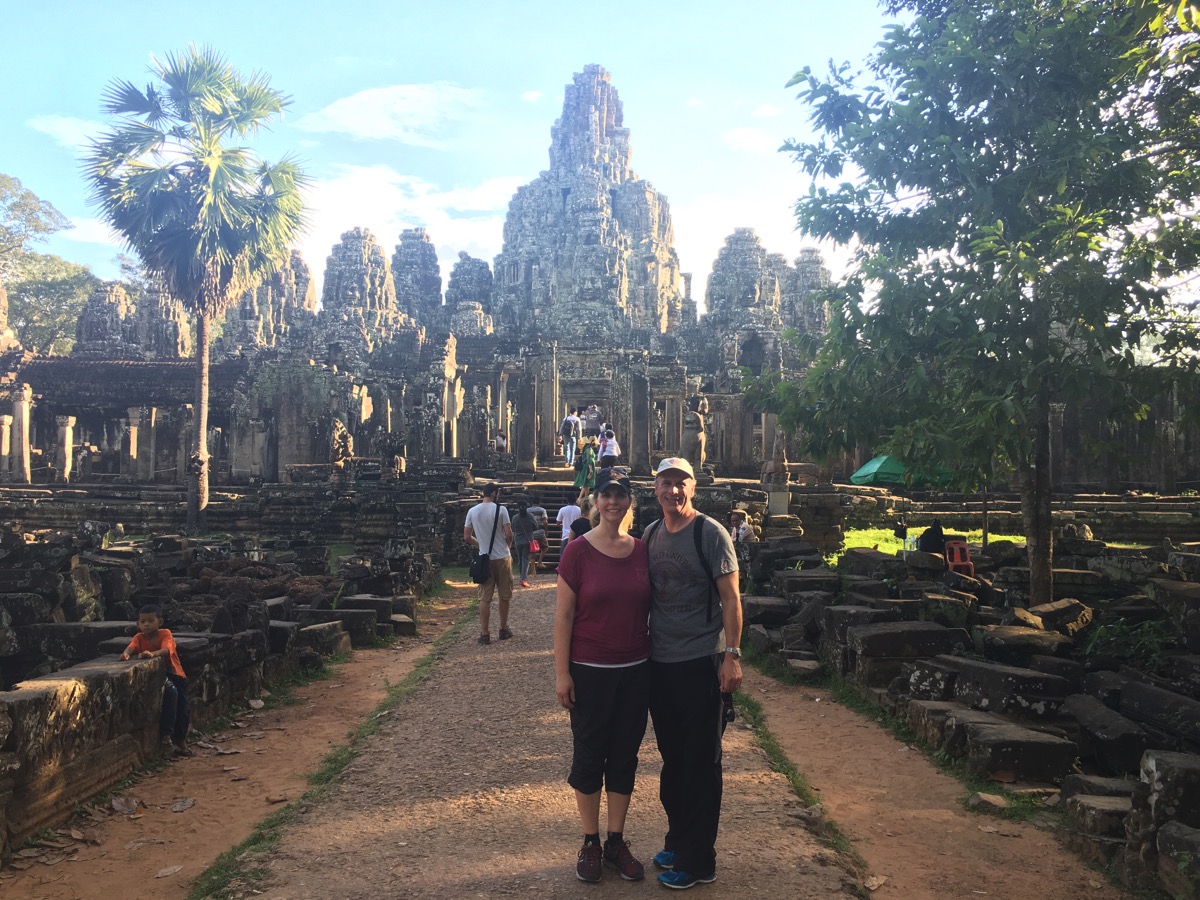
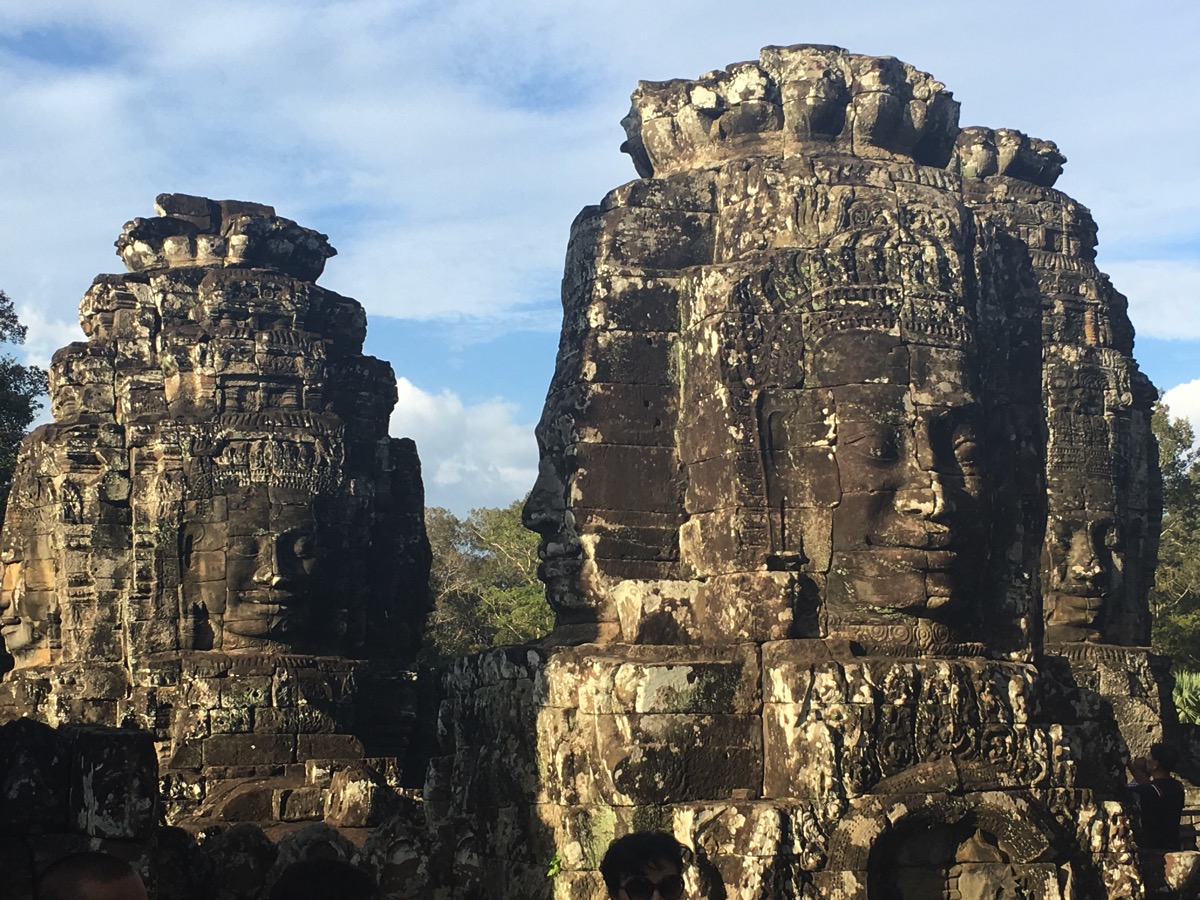
A common way to end a day at Angkor Wat is to take in the sunset from Phnom Bakheng, a tiny mound that our guide keeps referring to as a mountain but is a tiny hill just a few hundred feet high. However, after hearing how many people try to cram themselves in the limited space on the top, we decide to take a pass. Sunrise, we’re told, is the better event, and since we still have that on our agenda, call it a day and head back to the hotel.
So, was it worth the wait? That’s a tough question. The temples are breathtaking, pure and simple. But whether it was cramming so much into one day, the relentless crowds, or just the lack of opportunity to sit quietly and take it all in, overall it feels just a little less special than Egypt or Peru. The next few days will be calmer and less clinical, so maybe I’ll reserve my answer until then.
